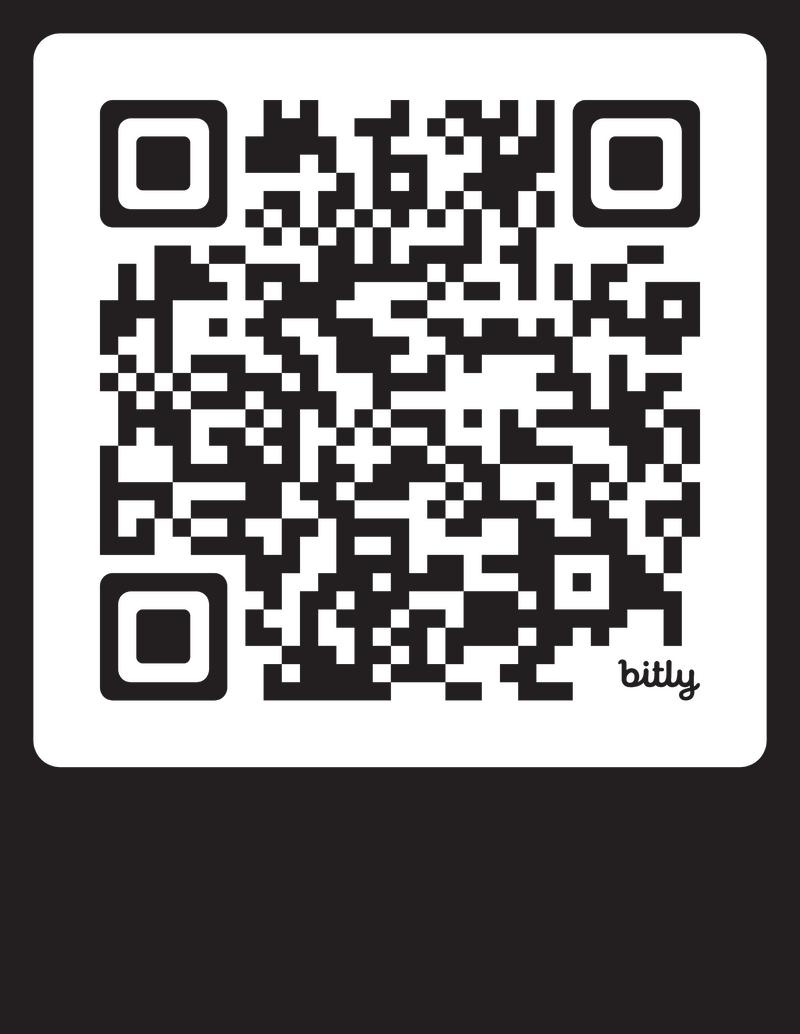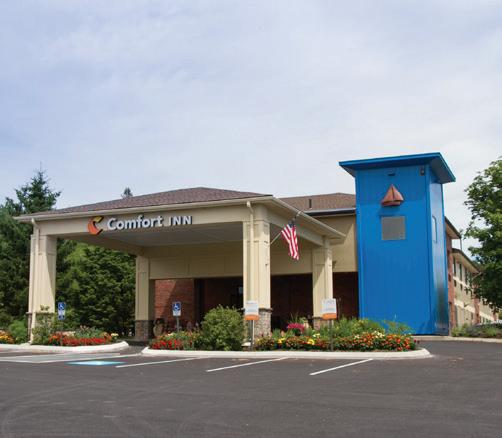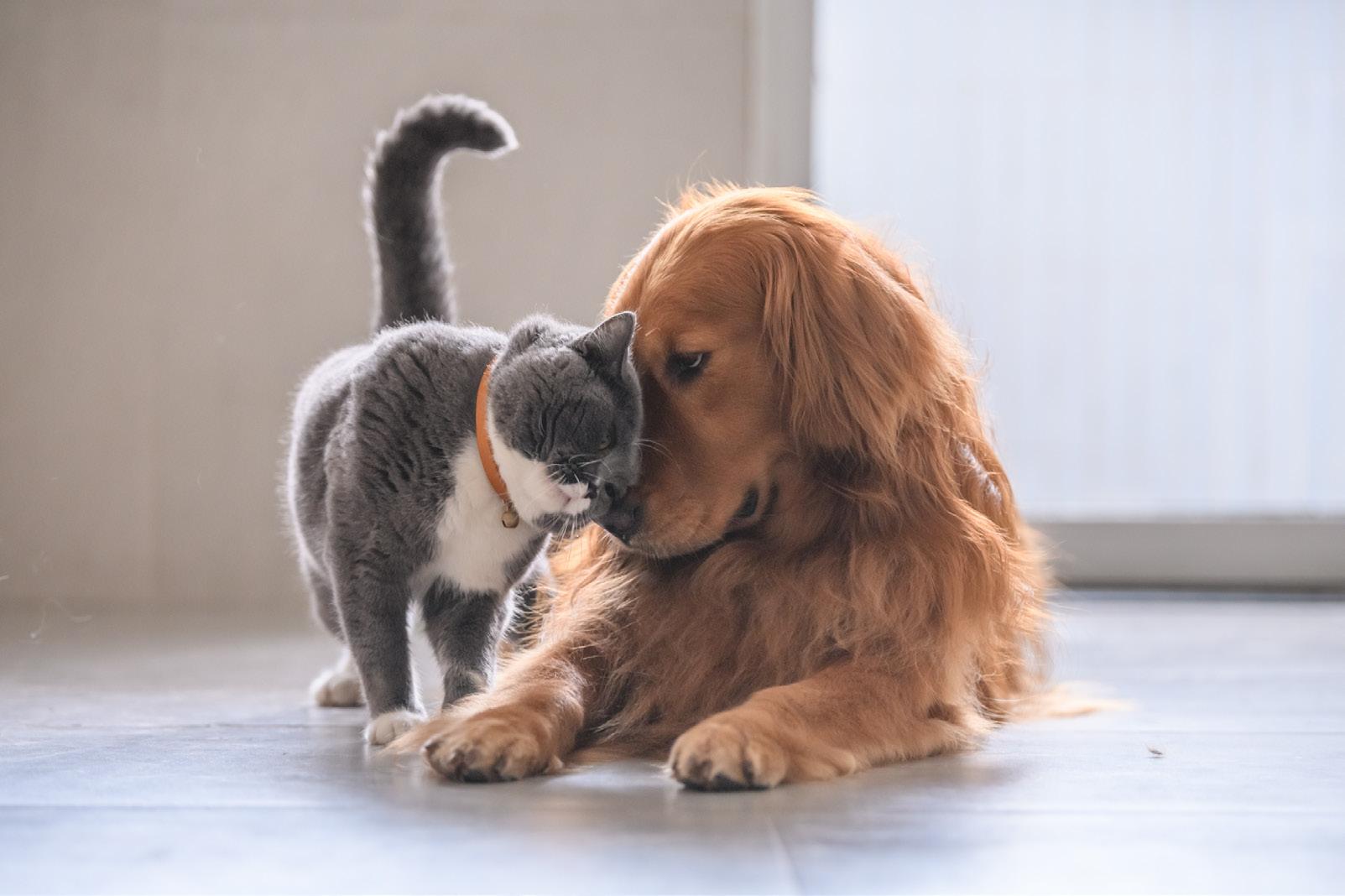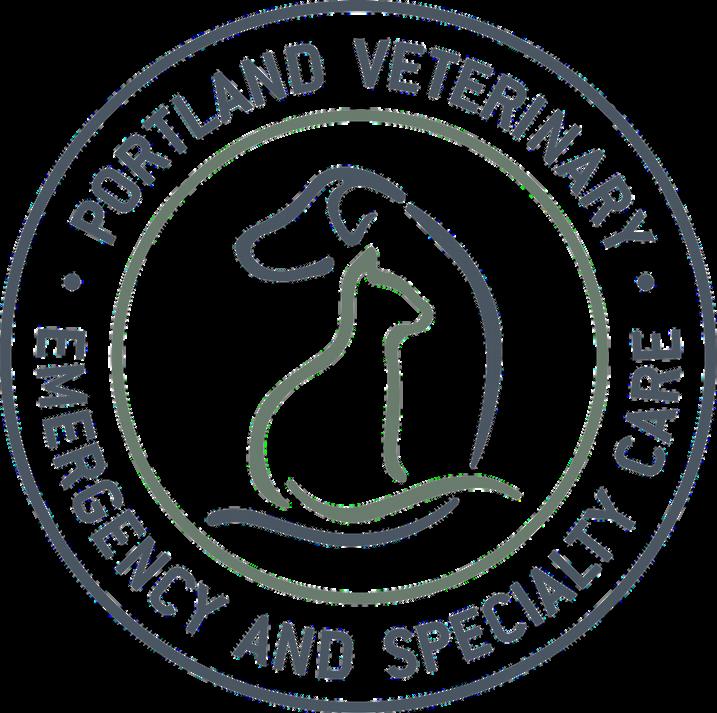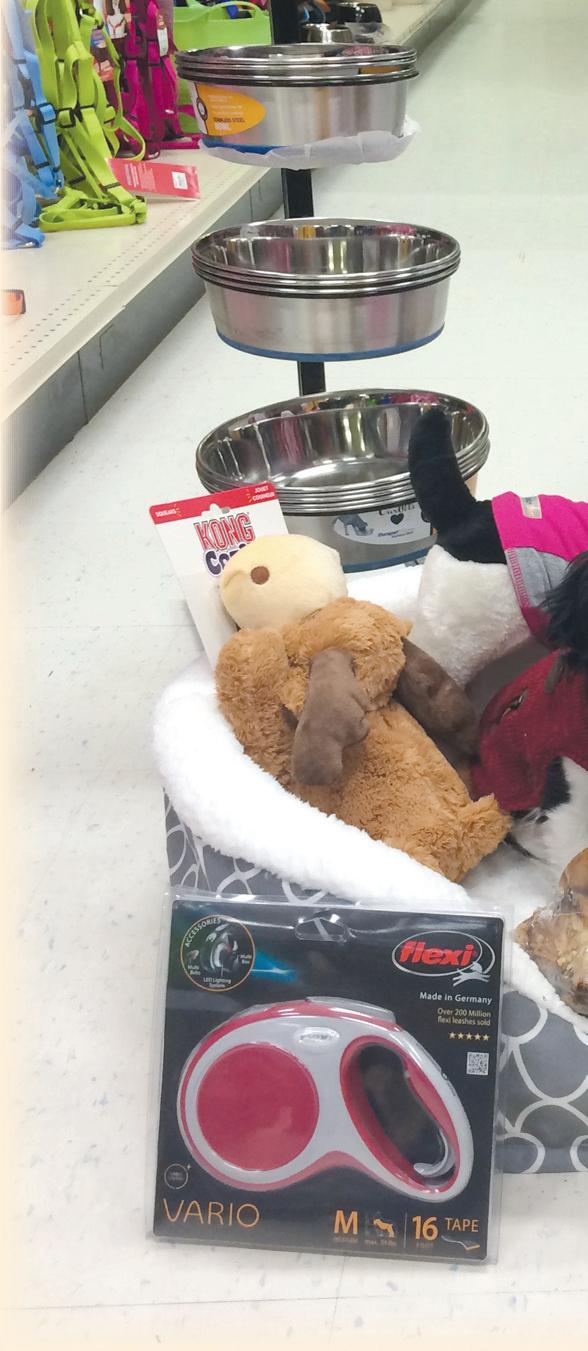Tips:
are invited to witness the most challenging sled dog race in the eastern United States!

Tips:
are invited to witness the most challenging sled dog race in the eastern United States!
Begins March 1, 2025





• Park well o the trai so as not to interfere with other trail users.
• If traveling along the trail during race hours please watch carefully for teams and slow down as you pass any.
• Some dogs are fearful of the noise of snowmobiles turning your engine o while stopped will help!
• Please don't allow children to approach the sled dog teams.
• Please leave pet dogs home.
• Bring extra warm clothing.

8 am - 11 am
Estimated Finishes:

2 YEARS OLD, Mixed Breed Guinness has been waiting over a year for a forever home. He is the biggest baby you will ever meet. He loves every person he ever meets and wiggles with his entire body with excitement to give you love. He wants to be the only love in your life (pet wise) so needs to be the only animal in the home. He keeps his kennel very clean too so house training will not be an issue! Do you have a couch or bed big enough to share with this guy? Help us finally get him in a home!


All three Can-Am Crown races (the 250, 100, and 30 mile races) have highly accessible starts on Fort Kent’s Main Street.There are no fees to view the races. Bring your camera!
Finish Line: Fort Kent (All 3 races finish at Lonesome Pines Ski Lodge)

Can-Am 30 – Saturday, noon – 2:15PM
Can-Am 100 – Saturday, 9PM – 4AM
Can-Am 250 – Monday, ALL DAY



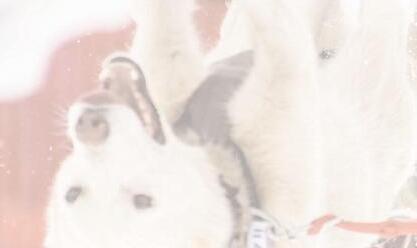
The Can-Am Crown organization arranges a festive dinner and awards ceremony after each racing event. Dress casually.


This dude loves nothing more than

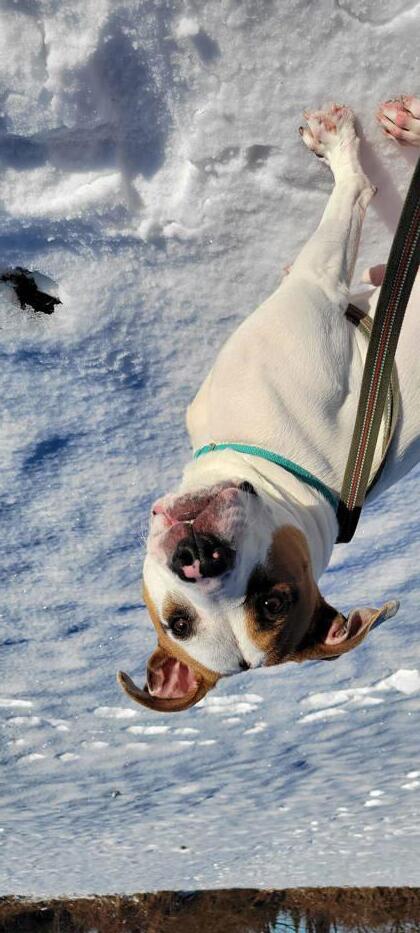
By Susan Spisak
As we continue to celebrate 20 years of Downeast Dog News (aka DDN), we thought it would be great to share a little about our contributors and why they love being part of this amazing publication!
Don Hanson, PCBC-A, BFRAP, Owner/President of Green Acres Kennel Shop and ForceFreePets.com in Bangor said that in 1995 he left a medical device management career in Wisconsin to move here and take over that business with his wife, Paula. The Hansons also brought along their three dogs and elderly parents.
In 2006 he wrote his first article for the paper, and that column became “Words, Woofs, and Meows” which focuses on behavior, training, nutrition, and general health. “If I could describe what I like best about what I do, it is learning about dogs and cats, writing about them, and educating others so that they and their pets can have wonderful lives together. Writing for DDN is just one piece of that, and I
See MEET on page 5
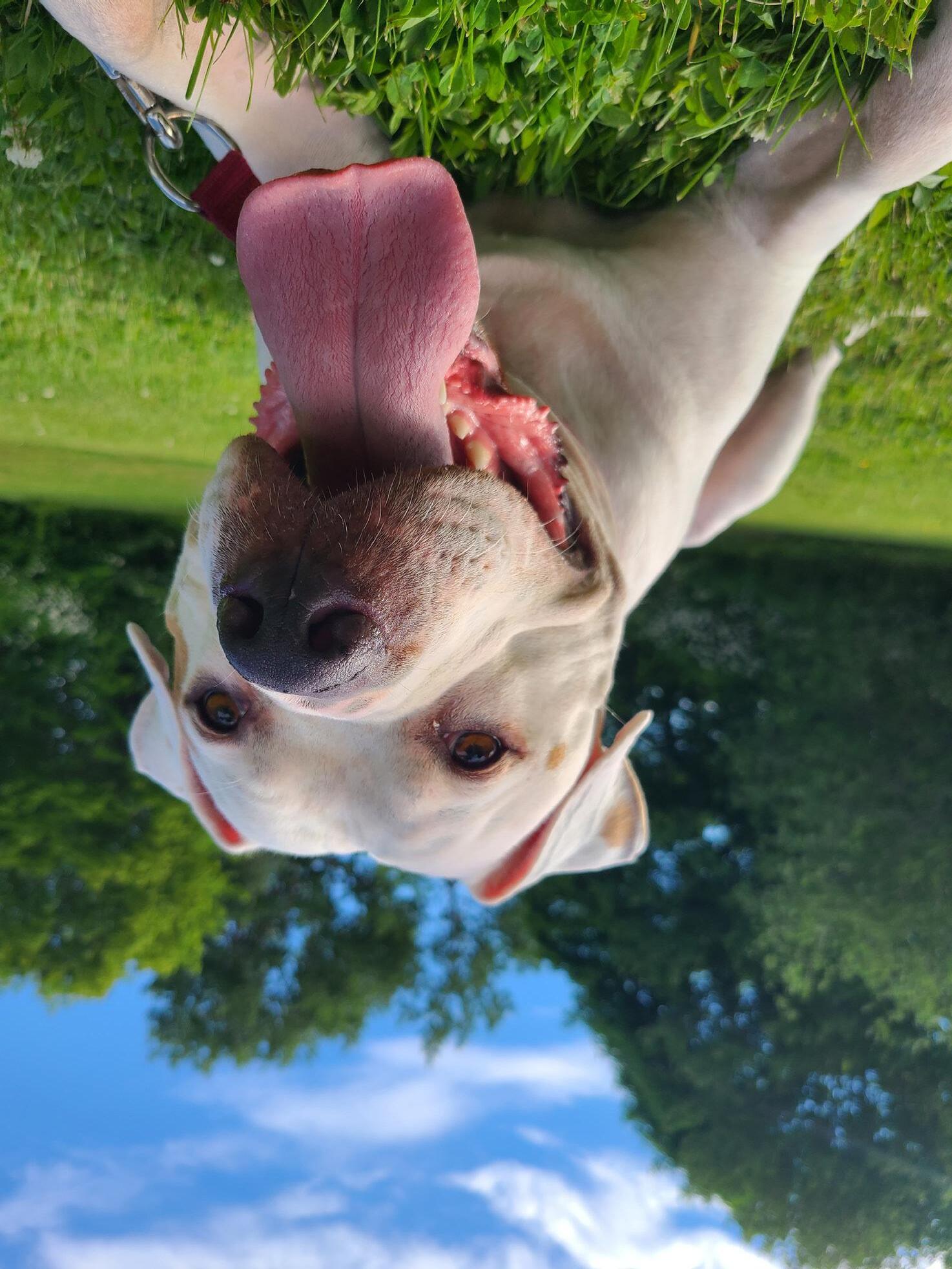
Lisbon St
By Don Hanson, PCBC-A, BFRAP
On December 24th, 2024, Northwest Naturals initiated a voluntary recall of one batch of Northwest Naturals brand 2lb Feline Turkey Recipe raw frozen pet food after it “allegedly” tested positive for the highly pathogenic avian influenza (HPAI-H5N1) virus. I’ll explain why I’ve used the word “allegedly” as you read on.
The recalled product has “Best if used by” dates of 05/21/26 B10 and 06/23/206 BI and was sold through distributors in AZ, CA, CO, FL, GA, IL, MD, MI, MN, PA, RI and WA in the United States, and British Columbia in Canada.
While we sell Northwest Naturals products at Green Acres, neither of these batches was, to our knowledge, distributed in Maine.
Reports indicate that one cat became ill and died from bird flu after allegedly consuming this food. While the death of any pet is tragic, it is essential to investigate each such incident carefully and by following protocol. The Oregon Department of Agriculture appears to have failed to
follow protocol, Laboratory tests using genome sequencing confirmed that the H5N1 virus recovered from the open bag of Northwest Naturals food in the cat's home matched the virus from the infected cat. However, for good reason, regulatory authorities are required to test unopened product samples, as once a package has been opened, it could have been contaminated by its environment. This failure to follow standard protocol caused Susan Thixton, the founder of The Truth About Pet Food, to state, “Oregon Department of Agriculture just proved to the entire world they are a corrupt regulatory organization. How? By violating the #1 rule in testing protocol and recall procedure.” Additionally, she stated, “Oregon Department of Agriculture has severely damaged the public’s confidence in raw pet food by neglecting to follow their own required procedures. This is unacceptable.” I concur entirely with Thixton’s assessment.
It is essential” to test an unopened package of the suspected
product before concluding that the containment came from the product. No other reports of NWN products being contaminated with (HPAI-H5N1) exist.
Secondly, there is also contradictory information about the cat, with some reports indicating the cat never left home and others suggesting the cat was outdoors frequently. The Centers for Disease Control and Prevention states on its website: “If your domestic animals (e.g., cats or dogs) go outside and could potentially eat or be exposed to sick or dead birds infected with bird flu viruses, or an environment contaminated with bird flu virus, they could become infected with bird flu.” Even if the cat was indoor-only, if family members venture outside the home, they could bring the virus into the house.
FMI – NWN Press Release –https://www.nw-naturals.net/12-2424-voluntary-product-recall/ FMI – Northwest Naturals – Recall FAQs – https://www.nw-naturals.net/ recall-faqs/















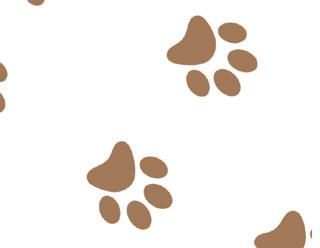
















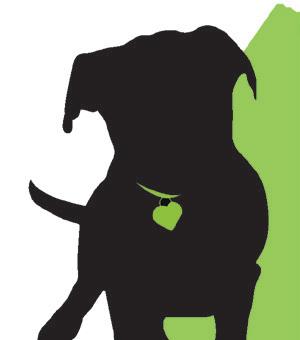



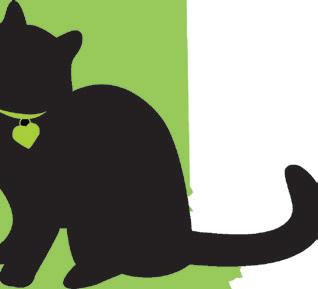
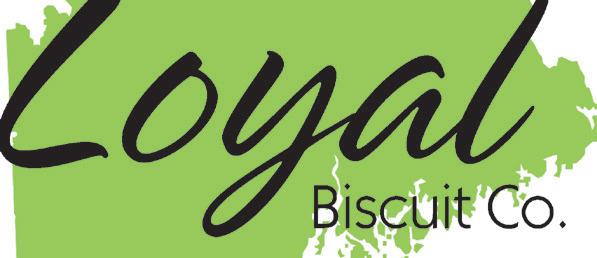





















PUBLISHER
Jenn Rich
COPY EDITOR
Belinda Carter
CONTRIBUTORS
Susan Spisak
Diana Logan
Sara Moore
Judith Herman
Carolyn Fuhrer
Don Hanson
Gail Mason
Elsebeth DeBiase
GRAPHIC DESIGN
NVDesigns • Nicole Vanorse
ADVERTISING
Jenn Rich
207-706-6765
jenn@downeastdognews.com
PRESIDENT Wendi Smith
PARENT & PUBLISHING COMPANY
Maine Pet News LLC
OUR GOALS
• Provide the latest in dog-related news and information.
• Encourage and support dog-friendly businesses and Maine-made pet products and services.
• Cultivate a community of responsible dog guardianship/ownership.
• Support animal welfare causes.
CONTACT US
Maine Pet News, LLC
8 North Main St., Suite 201, Rockland, ME 04841
Phone: 207-706-6765
jenn@downeastdognews.com www.downeastdognews.com
CIRCULATION
Downeast Dog News is distributed free of charge at grocery stores, pet stores and other Maine locations.
SUBSCRIPTIONS
Individual and gift subscriptions are available for $40 (includes tax) per year.
SPEAK!
Downeast Dog News welcomes submissions of local news, events and photos. Email: jenn@downeastdognews.com
COPYRIGHT 2006-2025
All contents of Downeast Dog News are protected under United States copyright law. The contents may not be reprinted or reproduced without the expressed written permission of the publisher. The views and opinions expressed within Downeast Dog News are those of its contributors and not necessarily those of the publisher. Content of ads is the sole responsibility of the advertiser. Every effort has been made to ensure the accuracy of the content and Downeast Dog News assumes no liability for any errors, omissions or claims made by its contributors or advertisers.
Dear Dog News Readers,
It sure is cold! I know some of you likely have dogs that do not like to go outside when it is cold or nasty out. That does not occur at this house. Pepper is an outdoorsy girl and has nice thick lab fur and she really doesn’t care. I have to make sure I bundle myself up well because if it is cold or raining or snowing it doesn’t mean we will return inside very quickly from a bathroom break. Of course, she also needs her exercise and to sniff the yard. On really, really cold days she does have a fleece vest she can wear but it may just make me feel better vs. serve a need. She does look awfully cute in it though.
Speaking of her thick fur, it is still so soft and velvety and for a girl who is about to turn eleven in April, she hardly has any gray, just a little on her chin. She still has quite a lot of energy as well. It helps me feel like I am doing something right. She is such a beautiful girl!
We want to wish Sully, who is featured on our cover this month, a happy belated 5th birthday. Sully belongs to Nicole who assists with and designs the paper each month. Make sure you read our cover story to learn a bit more about those who contribute to Downeast Dog News regularly as we continue to celebrate our 20th year.
We also want to wish Pepper’s cousin Kylo a happy belated 3rd birthday. Perhaps one of these years I will get these guys on the correct month. Luckily, they have no idea and if they did, I bet they’d forgive me.

Stay warm! This is a great time to work on some training and fun puzzles that can be done indoors or if you have a dog like Pepper, bundle up.
Warmest regards, Jenn and Pepper


We rescue older pups. Peaches came to us from a bad breeding situation. She's 10 years old, has no teeth and is partially deaf but she does have spunk. She rules the other 5 because she's the Queen.
If you’d like to submit a photo of your dog to be considered for Dog of the Month, send it with a small description of your dog (cool trick, silly thing he does, favorite toy) to jenn@downeastdognews.com or mail it to: 8 North Main Street Suite 201, Rockland, ME 04841. Each month one will be selected to be printed in the paper.
3-month minimum recommended
Business directory: $50/month
1/16 page $80 B&W, $95 color
1/8 page $140 B&W, $170 color
1/4 page $235 B&W, $280 color
1/2 page $410 B&W, $490 color
Full page $710 B&W, $850 color
Ask about 3, 6, and 12 month discounts
Up to 10,000 issues per month are distributed in grocery stores, pet stores and other Maine locations.
Advertising deadline is the 15th of the preceding month.
Contact Jenn Rich (207) 706-6765 or jenn@downeastdognews.com

H
ello and welcome to February’s edition of Furry Words! I hope the new year is treating you well and that you have enough layers for you and your pups to stay warm. We’ve had so many frigid windy days, but it does make us appreciate the beautiful hot summer days, right? This month I want to share a super fascinating reading I did about a woman’s dog named Lola. She reached out because lately the dog didn’t seem to want to hang out with her best dog friend and she was wondering what had happened.
First of all, it was a phone session, and she assumed we’d just be discussing the dog. Much like other calls I do, it ended up being about her and her fiancé more than the dog's behavior. I believe the animals come along to help us on our journey, and they can teach us powerful lessons we may otherwise shy away from. Lola’s short answer was the humans that had her bestie were going through some stuff, and they weren’t being the kindest to each other and the energy around them was a bit chaotic and grumpy.
by Sara Moore www.enlightenedhorizons.com

If you think of Pigpen in Peanuts, he always has the gray clutter around him. This energy looks and feels the same, and Lola was not enjoying being around it.
The second thing that came up was that Lola was very much




Q. Can my dog get this new avian flu?
A. Though dogs are susceptible to getting the Highly Pathogenic Avian Influenza (HPAI), so far it has been rare. A case has been confirmed in Thailand and Canada. Historically the first cases of influenza in dogs were in 2004 called Canine Influenza Virus (CIV), which was an H3N8 Influenza A virus. This virus is closely related to the Equine Influenza Virus. It is suspected that the virus mutated and was passed from horses to dogs. The next strain of influenza affecting dogs was in 2015 in the Chicago area. This outbreak affected thousands of dogs in the region. The strain of virus this time was H3N2, a form of avian influenza from Asia. Dogs were infected by direct contact with the virus. In Asia, it was suspected to have infected dogs in bird markets. Dogs imported from Asia were the probable cause for this outbreak. Symptoms may occur 2 to 4 days

connected to her maternal great, great grandmother, who was enjoying watching her descendant absolutely winning at life. The grandmother had been a successful businesswoman, but that was difficult to balance while doing what was expected of women “back in the day.” She would rather have simply been on her own, working, and not trying to find time to be a mom, so her dynamic with her daughter was strained. My client’s dynamic with her mom was much better but still had some challenges. The grandmother came back through the dog and around the dog because all the hard work that the women did in each successive generation had paid off, and her peace and success of Lola’s owners was proof of that.
When the great, great granddaughter did her own healing work, it also transferred back up to all of the women who came before. I have a podcast on this titled Healing Generational Trauma that can explain this even further. The part I really loved about the call was when she said that her dog seemed smitten with her fiancé, and



by Dr. Judith Herman
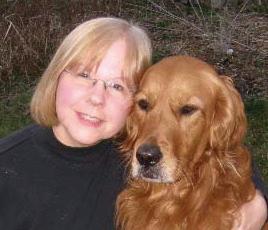
after exposure and dogs can shed the virus for about three weeks. The infection can cause mild to severe symptoms of influenza. Puppies under a year or dogs older than 7 years can be more severely affected. The mild form of the disease elicits soft, moist coughing that can last 10 to 30 days. They can be lethargic, have a mild fever, decreased appetite, and some have thick discharges from eyes and nose. The
she wondered what the connection between them was. The husband was the great, great grandmother’s true love reincarnated. She was never given the chance to be with him, and I believe he passed in either a tragic car accident or in a war zone. The granddaughter is living in a time where she can be a mom if she wants, she can have a career if she wants, and she knows how she wants to be loved and has found a man who reciprocates it beautifully. She has what her elder wanted for herself, and in this lifetime her soul is being healed through the love they have for each other.
Absolutely fascinating, isn’t it?! Thank you for listening to Lola’s story and if you’d like to set up a reading, go to www.enlightenedhorizons.com.



severe form can exhibit high fever and symptoms of pneumonia. Higher exposure to these viruses is seen where dogs gather, such as boarding facilities, dog parks, and dog events, both social and competitive. These 2 influenzas are passed in droplets through the air to other dogs. This is different from the HPAI infections we are seeing now. Luckily dogs do not appear to be as susceptible to this virus as cats. Documented cases are rare. Dogs are at risk if they eat sick, dead birds, and scavenging dead birds, come in contact with infected birds directly or indirectly, like bird feces, and are exposed to contaminated environments such as ponds or other gathering places for birds.
Avian influenza has similar symptoms to the other influenza viruses. They may have fever, lethargy, conjunctivitis, decreased appetite, and difficulty breathing. Additional symptoms might be neurologic such as tremors and seizures.
If your dog develops any of these symptoms, contact your veterinarian. It is important that the timeline is documented in the dog’s medical record. In most cases


supportive care, such as softer and enticing diets, cough medicine, and warm steam to break up any congestion is all that is needed. The more severe cases would need to be seen, have lab work performed to find out the cause of the upper respiratory symptoms, and have treatment because not all are caused by influenza.
Prevention where possible is the key. There are vaccinations against many upper respiratory diseases, including canine and avian influenza, but not the HPAI. Be cautious in crowded dog environments and around water where waterfowl hang out. Be aware and prevent exposure to wild and domestic birds. Feeding a raw diet of poultry that is contaminated with the virus can make them sick. You can resolve this by cooking the diet. When feeding raw, know your sources; confirm they are testing for diseases and other contaminants. You can safely feed kibble, canned, and other processed food.

Judith K. Herman, DVM, CVH Animal Wellness Center Augusta, Maine
www.mainehomeopahticvet.com
love it.”
Don’s had ten dogs and six cats in his life. The ones that have taught him the most have been canines Gus, Tikken, Dulcie, Muppy, and feline Thelma. “However, every one of them has a big space in my heart and remarkable stories in my memories.”
He added that last fall he went to the Maine Wienerfest and was humbled by the large number of attendees who said they enjoy his column, “Thank you to all of you who took the time to do that. It means a great deal to me.”
Diana Logan CPDT-KA, proud mom of Poodle Skipper, is the owner of the training studio PupStart in North Yarmouth. She’s been writing her monthly training tips column since 2011 and is happy to be a contributor. “Sharing knowledge with a wider audience is invaluable, and I try to provide readers with insight into how they can approach dog training from a positive-reinforcement angle.”
She started as an enthusiastic puppy owner in 2001—her interest morphed through her many certifications and agility enthusiasm. Another passion is Canine Musical Freestyle, an art that combines positive reinforcement training, precision moves, music, and creativity. “I was very honored to have received the ‘Poetry in Motion’ award for 2023 from Rally Freestyle Elements, one of the leading freestyle organizations in the country.”
Judith K. Herman DVM graduated from the College of Veterinary Medicine at Michigan State University. In 1994, she finished the Professional Introductory Course in Veterinary Homeopathy and opened the Animal Wellness Center in Augusta in 1995, focusing on holistic approaches to animal care and behavior.
She began writing for DDN in 2012 and appreciates that it’s an informative, free publication. “I enjoy exploring topics that may help folks with the health of their best friend.” Like all the contributors, she loves animals, “In my adult life I have had mostly Golden Retrievers, and a Lab, two cats, and a horse. Each of these companions has given me insights that have shaped my vocational path. My current best friend is Bryce, an extremely talented, funny, and engaging Golden.”
For myself, Susan Spisak, I began writing for DDN in 2012. I have a BA in Communication Arts/Journalism and was freelancing for other dog publications prior to DDN. My fulltime work’s varied, but I’m currently a remote patient medication appeals coordinator in the healthcare industry,
but I treasure my DDN assignments!
I’ve been a long-time rescue advocate and volunteer, and at one time my husband and I had three certified therapy dogs. Currently we have rescues Teddy, a gentle, silly black brindled Golden mix and Banx, a sweet Goldie. I’m so grateful to all the people I’ve met through DDN, including the gifted contributors, as they've had such an impact on me.
“There are very few places in Maine where people can go to learn about performance sports for dogs,” said Carolyn Fuhrer, accomplished owner of North Star Dog Training School. So she appreciates that writing her column of thirteen years “Training your Performance Dog” affords her the opportunity to let readers understand the possibilities for growing canine relationships through these sports.
“My 30 plus years of experience in performance dog sports and being an AKC Tracking Judge allows me to share with and encourage all newcomers, as well as teach the finer points to those more experienced,” said Carolyn. She has five Golden Retrievers who always look forward to her new training challenges!
Christine D. Calder DVM, BoardCertified Veterinary Behaviorist of Calder Veterinary Behavior Services, started with DDN in 2019. She is a specialist and has extensive knowledge about medications to help improve pet’s behavioral health and overall well-being. “As a veterinarian and board-certified veterinary behaviorist, behavior is my profession, and education is my passion.”
Her drive for DDN is simple, “I love sharing information with the public to combat the overwhelming amount of misinformation about pet behavior. Pet owners, caregivers, or guardians (whichever term fits best) face so many conflicting messages every day. My goal is to provide them with a trustworthy resource for understanding their dog’s behavior.”
She’s had many dogs through the years, and their current dog is Roux, a Rhodesian Ridgeback. Their home’s always been full of animals—cats, chickens, goats, turkeys, guinea hens, pigs, cows, a guinea pig, a bearded dragon, and snakes, “We love them all!”
Elsebeth DeBiase is a master groomer specializing in small, senior, and fearful dogs, and has been submitting quarterly columns for five years. “I enjoy educating pet owners and helping them care for their dogs.” She has four Dachshunds—Stori, Elmer, Matilda, and Heinrich.
Sara Moore is a pet and people psychic, and she’s written “Furry Words” for fourteen years. She “reads” people
via the phone or Zoom, has a podcast, and is a monthly guest on 94.9 HOM. “I love connecting people with their pup, especially when it helps them find peace at the end of their lives and to help new rescues and the new family better understand each other.”
She has a sweet chocolate Lab, Syd. Sara also shares three well-behaved yellow Labs with her wife, and what she calls the best cat in the world, Casper/ Kitty Do No Wrong, who is part of her heart and soul. She added, “Thank you to all of you for following and commenting on ‘Furry Words’ for so many years! I look forward to many more.”
Long-time contributor Dr. Gail Mason of Portland Veterinary Emergency and Specialty Care currently submits six articles a year. She holds a Doctorate of Veterinary Medicine from Tufts University and is a Board-Certified small animal internal medicine specialist. “As a veterinarian (a specialist in internal medicine who also works in oncology), I like to teach others and educate them in veterinary health matters.” She added, “Progress in veterinary medicine is exploding, and sharing this with canine lovers is exciting.”
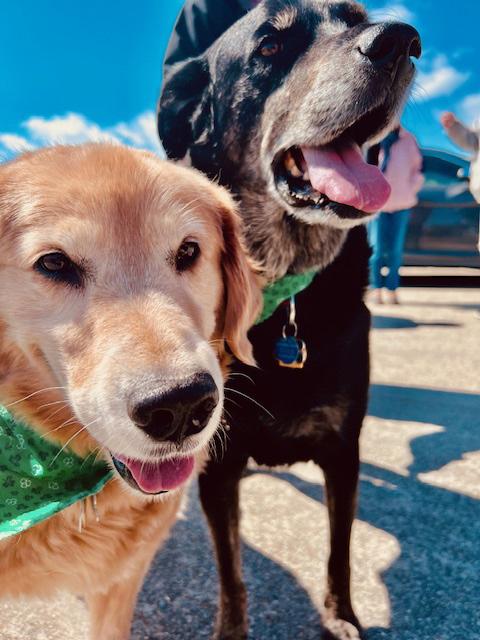

She’s had many pets, but her last five dogs have been Jack Russells. “They totally match my personality type!” Her current pair are Ruby, a smaller female, and Dui (pronounced Dewey), a younger, larger male. She also competes with her American Quarter Horses. She added that she feels the newspaper is popular, user-friendly, and it connects many dog lovers of all kinds, “I read it every month!” She and publisher, Jenn Rich, have received valuable feedback and even topic requests.
Dog-lover Nicole Vanorse, DDN’s Graphic Designer and Assistant, has been with the paper since 2020. “One of my favorite aspects of my work is the creative freedom I have when designing for the paper. I like seeing all the various products and resources available for pets and that the paper gets that information out there for people to see and read about.” She loves assisting rescues with their adoptable dogs and hopes they all find wonderful homes.
“We have had the pleasure of sharing our lives with three wonderful dogs. Our first dog was Raven a Rotti/German
an American Pit Bull Terrier, our biggest goofball!”
Belinda Carter is the copy editor and said she’s done this for as long as she can remember. She was asked to join the staff by DDN ’s President and Co-Owner, Wendi Smith. Their paths had crossed in earlier years—Belinda was Wendi's literature teacher at Yarmouth Jr./Sr. High School.
As a dog-lover, she looks forward to reading the articles submitted.
Unfortunately, in 2023 she lost her senior standard Poodle, who was her ‘heart’ dog. Belinda does have a 6-yearold Cockapoo who acts like a puppy.
“She keeps me on my toes!”
Note: You will find more photos of our columnists' dogs with their columns.


Remember your parents warning you, “don’t play with your food” when you were sitting at the dinner table, as if you’d be breaking some golden rule of etiquette if you did, and your future would be tainted forevermore? Well, my mom never said this, and I’m grateful for it. I believe, or want to believe, that this early freedom to explore the aesthetic potential for combining various food items helped cultivate my creative side. Sure, some of this creativity came in the form of painstakingly enveloping pieces of cooked liver with bright red ketchup to make it palatable. This custom of mine wasn’t discouraged by Mom, and I would eventually consume my artwork.
What does this tidbit of Diana’s personal history have to do with dogs, you ask?
While it’s unlikely our dogs will grow up to be grand gourmand “arteests” if we give them free rein to play with their food, we can help








by Diana Logan
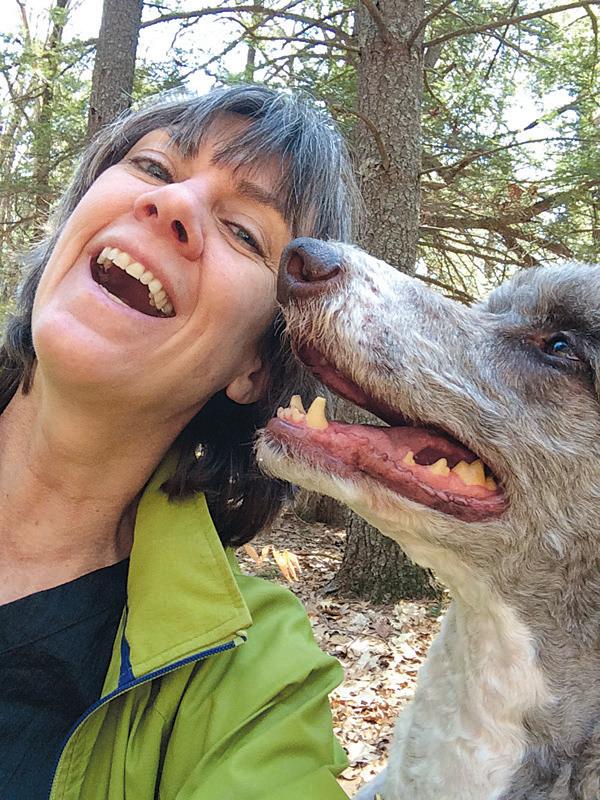
them learn a myriad of skills and habits if we replace the standard practice of feeding their meals from a bowl with more experiential events. At the very least, we can buy some time, and if you have a puppy, time is a very precious commodity.
The Ubiquitous Dog Dish
Why do we think we need to assign our dog’s daily calorie consumption to one location, one vessel, and at specific times? Ancestral dogs, like ancestral humans, spent much of their time hunting and scavenging for food. Dogs had to use their noses, their cunning problemsolving abilities, their entire bodies. They had to run veritable marathons and negotiate physical obstacles in pursuit of calories. They are built for this! I’m pretty sure there was very little incidence of obesity as there is today, for either species, though don’t quote me on that. Modern dogs, at least in our culture, rarely need to lift a paw to get what they need, and in turn, they lose out on opportunities to learn, to become more resilient, to problem-solve, to build frustration tolerance.
What to do?
Turn Mealtime into Puzzle Time!
I’m not talking about storebought slow feeders, which do a fine job of simply slowing down our fast eaters but not much else. I’m talking about novel set-ups that require our dogs to engage their brains and bodies to figure out how to access their food. Whatever you feed, there are ways to present your dog with fun challenges that are fun

for the dog and entertaining for the humans! Check out the video on my Vimeo channel to see examples.
Design Guidelines
The puzzle must:
• Be easy enough for your dog to be successful
• Require some problem-solving
• Not frighten your pup
• Be safe
• Be constructed of something you don’t mind your pup engaging with or damaging
• Be novel, even if it’s just a tiny bit different from last time (e.g., a different cardboard box, a different location, etc.)





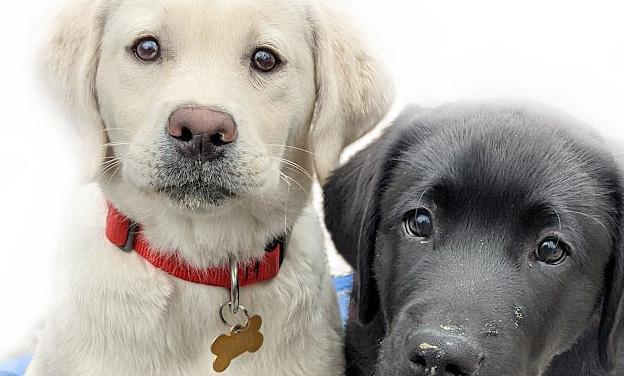






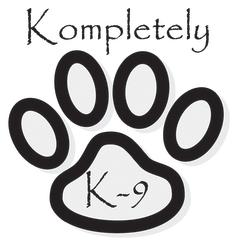



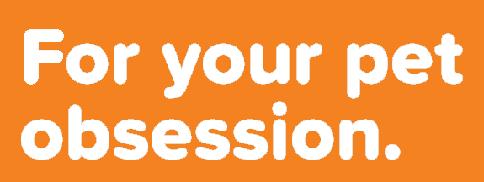
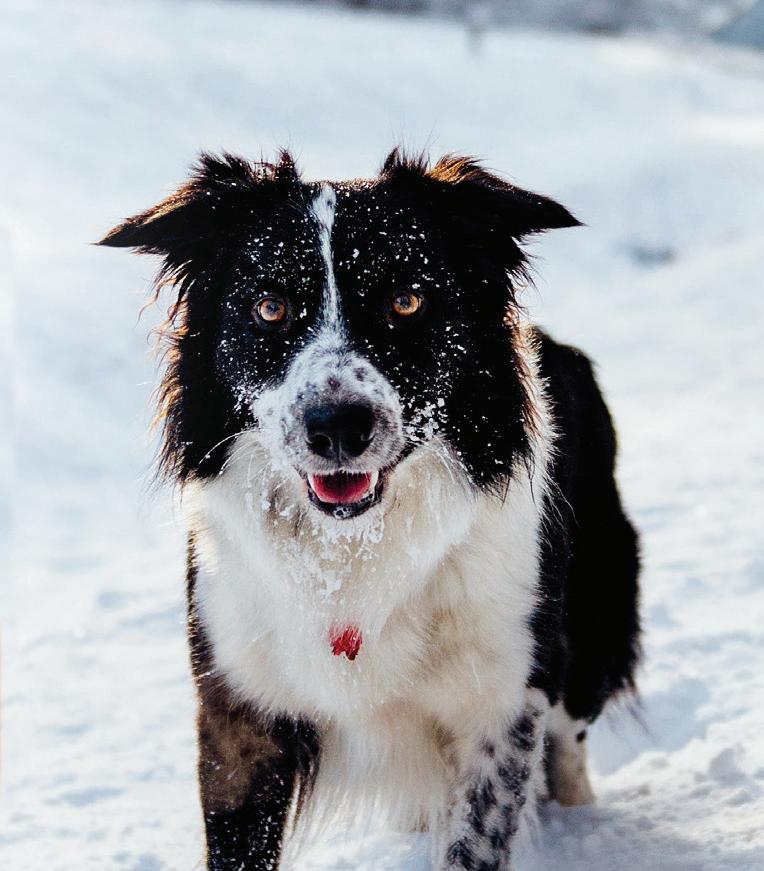
By Dr. Gail Mason, DVM, MA, DACVIM Chief Medical Officer, Portland Veterinary Emergency & Specialty Care
While the majority of owned dogs are neutered, some owners choose to keep their male dogs sexually intact. The prostate gland produces nutrients to help sperm survive once inside the female’s reproductive tract. It is located on top of and surrounds the urethra (exit tube from the bladder). Because the prostate continues to enlarge in intact dogs (from testosterone influence), about 50 % of intact male dogs will experience age-related prostate issues starting as early as 4 years of age. These changes are expected, and not all of them lead to serious consequences. However, a “prostate exam” should be part of the physical exam in adult intact male canine. The veterinarian will perform a rectal exam to check the size and shape of the gland and note any signs of pain. Symptoms of potential prostatic disease
The symptoms of prostatic health issues include bloody or blood-tinged urine dripping from the penis or found on bedding, increased frequency to urinate, straining to urinate, low sperm
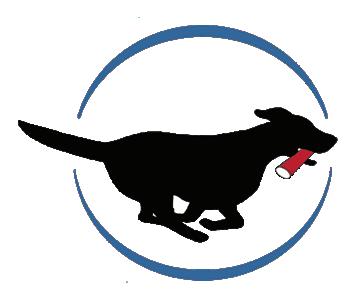
11 years old, Bulldog Mix
Not only will Brutus push your every button, he will also steal your entire heart. Life with Brutus is demanding, however, with love and patience Brutus will become the light of your life. Loves butt rubs and scratches, absolutely loves to ride! He is on oral medication, medicated baths and a special diet.
FMI visit: pethavenlane.org
count, interrupted streams of urine or blood (“start and stop”), and even straining to defecate. Systemic signs of illness can also occur, which include lethargy, low appetite, back pain, stiff gait, and fever. These symptoms are also those expected with a lower urinary tract infection (“UTI”), so it is important to begin some diagnostic tests.
Types of prostatic disease:
• Benign prostatic hyperplasia (BPH): is the expected enlargement of the prostate gland over time. Most intact male dogs will eventually develop BPH, but not all will be symptomatic. The prostate can be palpably enlarged but should not be painful or be firm/irregular in shape.
• Prostatic abscesses: are walledoff areas of infection that can cause systems illness. These may need to be drained, followed by long-term antibiotic therapy. The prognosis is generally favorable with proper management. Castration can be considered to reduce the size of the prostate and risks of future infection. This can be done surgically or with certain medications.
• Prostatic cancer: it may surprise you that prostatic cancer is most frequently diagnosed in neutered males, as it is independent of testicular hormone influence. We do not know what the exact relationship is between neutered dogs and prostatic cancer. The cancer is uncommon, and may reflect that neutered dogs live longer, rather “cause and effect.”

The two main types of prostatic cancer are urothelial transitional cell carcinoma (TCC), and primary prostatic adenocarcinoma (PCA).
Diagnostics used in prostatic disease
In mildly symptomatic dogs, routine diagnostics such as screening blood work (to assess overall health, kidney function, and evidence of infection), a physical examination (including a rectal exam), and a urinalysis are done. If an infection is deemed, a urine culture may be requested to formulate the antibiotic treatment plan. Because the
prostate is enlarged and irregular, it takes longer for antibiotics to penetrate the gland and irradicate the bacteria. A screening abdominal radiograph (X-ray) can detect prostatic and/or lymph node enlargement, as well as calcification (more common with malignancy).
Advanced diagnostics
Abdominal ultrasound is a safe, noninvasive modality to evaluate the size, contour, and internal architecture of the prostate gland and surrounding
Sponsored by: (207)322-5111, kompletelyk9.com
2 years old, Catahoula Leopard Hound Mix

Ginger has been nothing but a wonderful guest in our home and has learned the routine here quickly. She is house trained and mostly crate trained, sleeps well by herself or with others, and nondestructive when left alone. Ginger loves toys of all kinds and playing fetch or tug.
FMI Email: sln2310@yahoo.com
Terrier, Pit Bull/Mix
Rex is looking for a home where someone can challenge him in a good game of tug of war. He’s always up for a good game of fetch, walks around the neighborhood or flopping on the couch for a good nap. We think he’ll be quite the snuggle-bun! No other animals. Kids 10+ years
pethavenlane.org
Sponsored by: 18 branches from Wiscasset to Calais,

Sponsored by: Haggett Hill Kennel 93 Dodge Rd., Edgecomb, (207)882-6709, haggetthillkennel.com

Australian Cattle Dog I love to go for big walks, hiking, and playing catch with my foster mom. You can definitely win me over with squeaky toys. I love doing new things and showing her how quickly I learn. I’m really smart and I know I’m getting treats for being a good listener!
Email: sln2310@yahoo.com
Sponsored by: Rising Tide Co-op 323 Main St., Damariscotta, (207)563-5556, risingtide.coop
3 years old, Lab/ Terrier Mix
Bea’s name means “ bringer of happiness”. She will for sure bring nothing but happiness into your life! She walks well on a leash and loves everyone she meets. We think she’d do well with kids of all ages, although we are not sure about cats and dogs at the moment She is willing to meet other dogs!
pethavenlane.org


8 year old, Catahoula Leopard Hound Mix
This sweet senior is a true velcro dog, always wanting to be close to his people. He is a big, cuddly couch potato who loves nothing more than snuggling up. While he is typically happygo-lucky, he can be sensitive to sudden surprises. Walks well on a leash, enjoys car rides, making him a great companion for adventures.
FMI:

Sponsored by: Loving Memory of Robby, Bet, and ZephyrJoe



We hope you find this article helpful for your home grooming. When you are ready to visit a professional groomer, we hope you will consider one of our advertisers.
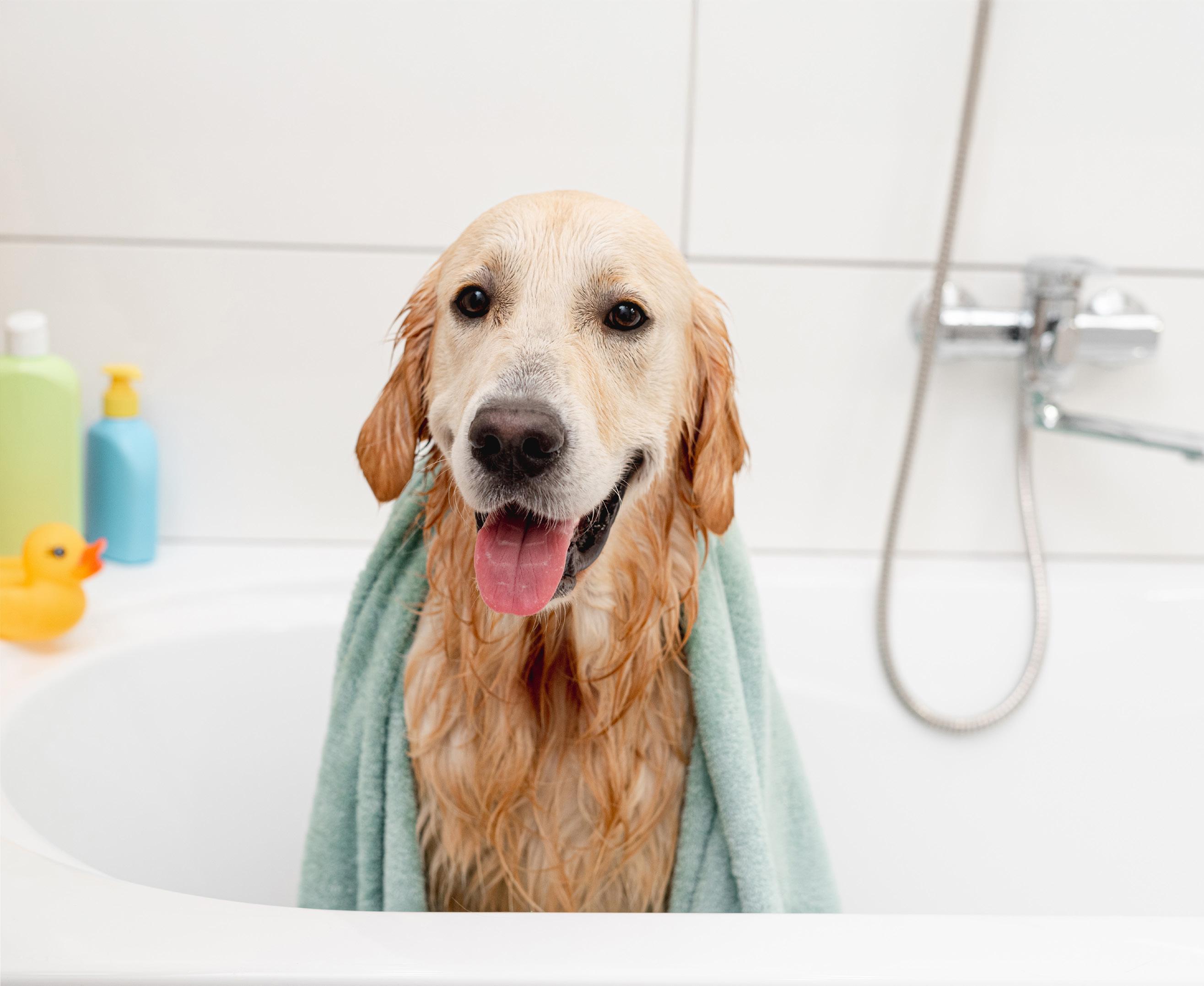
by Elsebeth DeBiase, BAminSC, ICMG, FFCP, LSHC-S Coastal Creations Pet Salon,
In the 1902 short story, "The Cat That Walked by Himself," Rudyard Kipling wrote, "When the man woke up, he asked, 'What is the wild dog doing here?' And the woman replied, 'His name is not Wild Dog anymore, but the First Friend because he will be our friend forever and always.'" Dogs have walked alongside humans as helpers and companions for thousands of years, cultivating a unique relationship. Early dogs learned to interpret human body language and form emotional attachments with us, allowing them to adapt to society and bond with humans for generations. In our busy modern world, it is easy to take for granted that dogs love us. Setting aside time to strengthen meaningful bonds with our dogs is important; grooming is one way to achieve this.
Home Grooming to Build Bonds Grooming one's dog is more than vanity, a necessary haircut, or even cleanliness; it is about connection. It should be a quiet time to show admiration and compassion and foster mutual trust. Trust is the foundation on which great, lasting bonds are built. Positive repeated grooming interactions will help cement trust between caregiver and canine. The purpose of bonding is to form connections to improve cooperation, thus enhancing the well-being of both dogs and humans. Our relationship with dogs is mutually beneficial. Humans seek
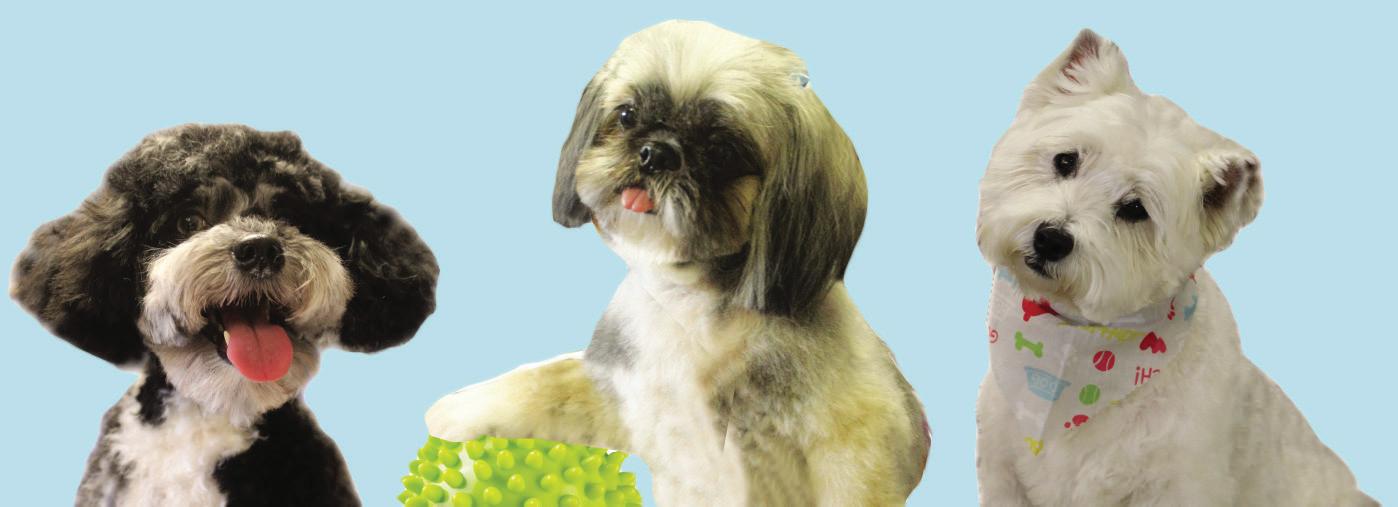


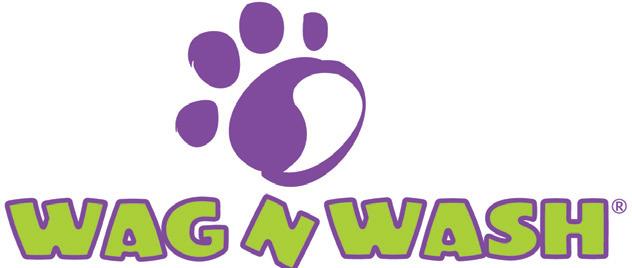
Pet Supplies Plus locations: 50 Market St., South Portland, (207)331-4062
91 Auburn St., Portland, (207)331-3263
1364 Main St., Sanford, (207)292-4171
770 Roosevelt Trail, North Windham, (207) 292-4017
Wag N Wash locations: 4 Scammon St., Saco, (207)331-8665
200 Expedition Dr., Scarborough, (207)413-2011 See ad on back cover
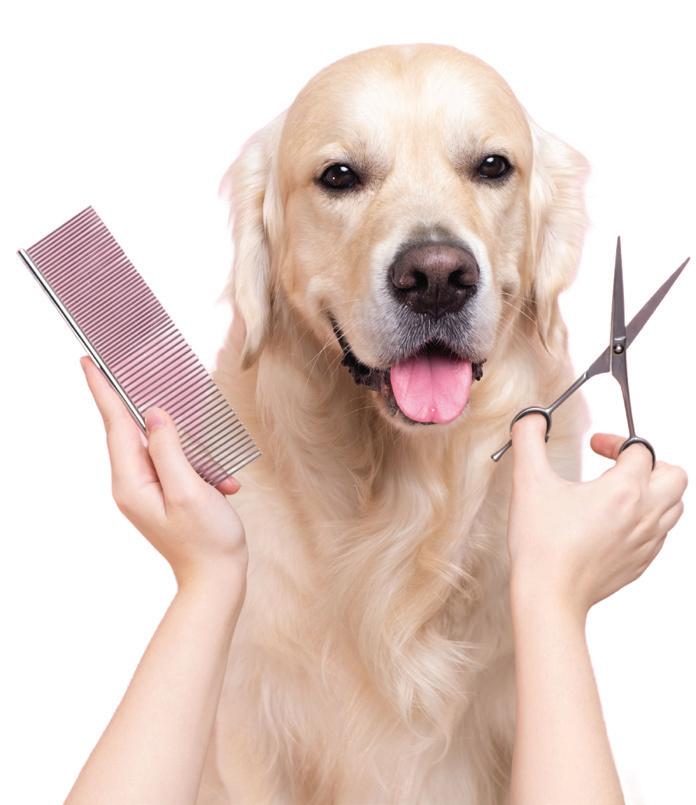


companionship, emotional support, and assistance in protection, farming, and service work. At the same time, dogs depend on us for their care, security, and affection.
Grooming based on Trust
Like humans, dogs are individuals with unique personalities, making each relationship-building experience different. While many dogs are trusting, others, especially rescue dogs with complicated pasts, can be wary and feel unsafe in new environments. The feeling of being safe is a cornerstone of trust. To help dogs feel secure, patience, understanding, and knowledge of canine behavior are crucial. Tips for building trust during grooming sessions include:
Learning to Speak CanineObserving your dog's body posture from nose to tail and looking for tension is a good way to start. Dogs communicate with their bodies, using body posture and facial expressions to give us cues about how they are feeling. Still, these signals can be fleeting and overlooked. Muscle tension, stiff movement, and






facial expressions can indicate an uncomfortable dog. A calm or content pooch will have a relaxed or neutral body posture, a facial expression free from tension, and ears and tail carried in its natural position. To learn more about canine body language, visit http://fearfreehappyhomes.com/video/ dog-body-languages-101/.
Communicating with Body PostureDogs use keen observation skills to determine how other animals and humans feel by watching body posture and facial expressions. Research shows that dogs understand human smiles, frowns, and even follow a person's gaze. Maintaining a relaxed posture, speaking quietly and slowly, and using calm, gentle movements will put your dog at ease. To learn more, visit http:// fearfreehappyhomes.com/video/whatcan-your-body-communicate-to-yourpet/.
Keeping it Predictable—Dogs do best in environments with a routine. Set aside 10 to 15 minutes each day to practice home grooming. Be sure to keep your interactions consistent, using



a calm, gentle approach, and plenty of praise.
Keeping it Positive—Offer praise, treats, or a favorite toy for desirable behavior, however small. Consistent rewards will help create a positive association with grooming and you as the groomer.
Starting Slow—If you are unsure of how your dog will react, start small. Set up a distraction free grooming area with a non-slip surface or mat. Spend quiet moments in this space feeding delicious treats. Incorporate petting using slow strokes on the chest or along the shoulders and spine, working up to more sensitive areas such as the feet,

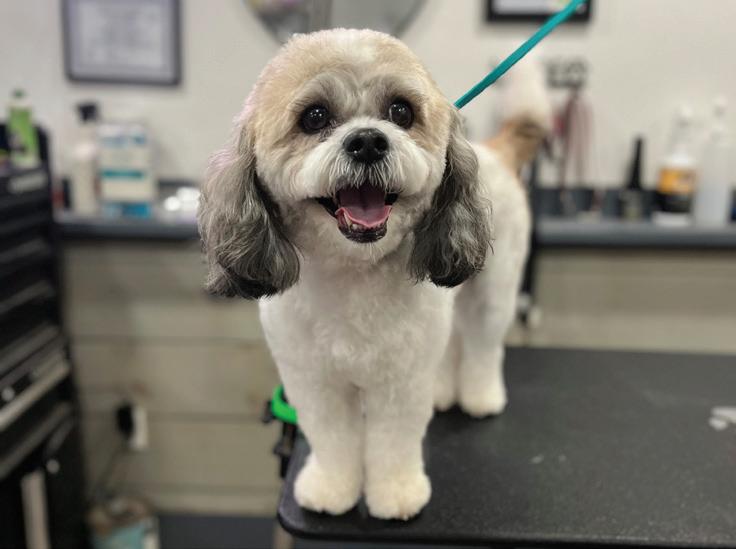
ears, and tail. Petting, brushing, and combing can be stress-relieving for you and your dog.
Grooming is essential for health and comfort, and with the right approach, it can be a great way to spend quality time with your dog for years to come. Happy Grooming!

Note: Stori, Elmer, Matilda and Heinrich are Elsebeth’s dogs. If you have not already, please read our cover story about our Downeast Dog News contributors.
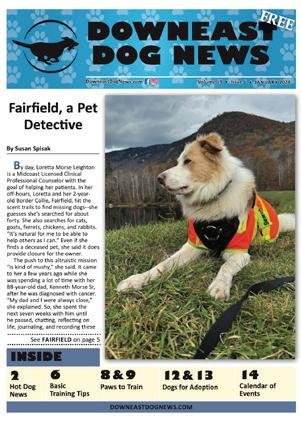

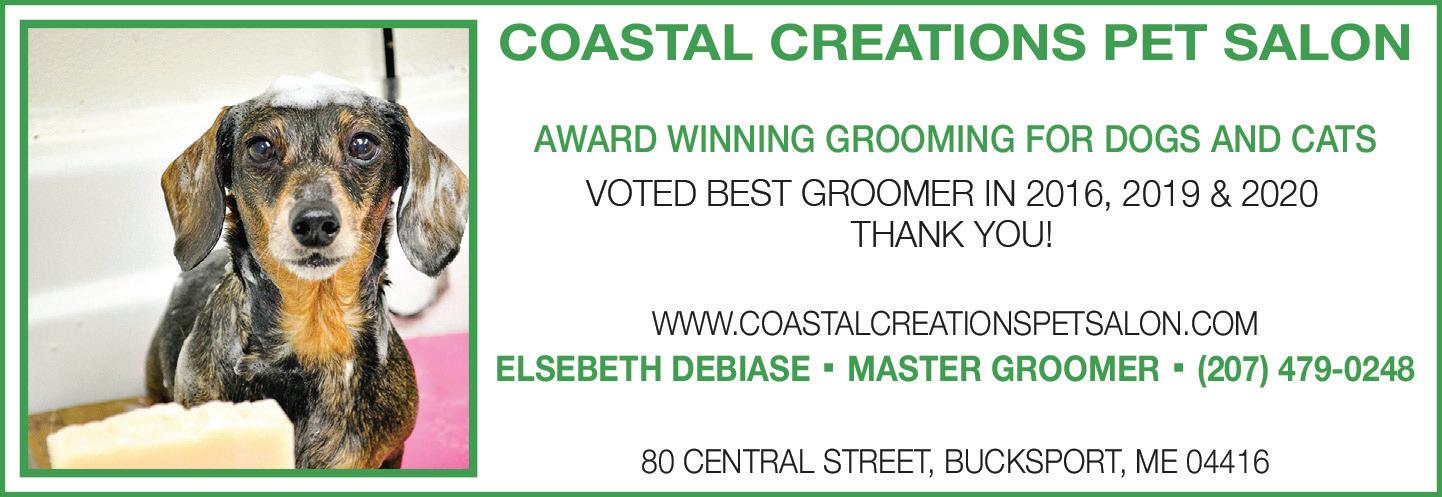

by Carolyn Fuhrer
Most people don’t really understand how dog sport events happen. They just know that they enjoy going to different venues and competing with their dogs, having fun, and earning ribbons and titles. Dog sporting events are dependent upon local clubs which are licensed by an organization like AKC or CKC to put on the event. A great deal of planning and work goes into putting on a show, or a trial, not to mention the expenses of the judges, site rentals, ribbons,
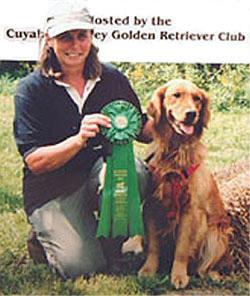
hospitality, fees to the organization, etc.
Clubs depend upon their membership to plan, organize, and put on these events. In most venues it takes a lot of dedicated volunteers to make things work and run smoothly. Without members, there are no clubs, without clubs, there are no events. So…if you enjoy dog
sports in your area, this is why you should join a club.
Many people feel that they have a job and don’t have the time, or that they are new to dog sports and really are not very knowledgeable – or that they want to show their dog so they cannot help. There are so many little jobs that you can do to take the burden off someone else. You can proofread premiums, help with publicity, help with parking, greet and direct people, help set up, help clean up, learn to steward, learn to keep score, course build, ring crew, lay track, help with hospitality – and the list goes on; the jobs are endless.

Can’t do any of these? How about a contribution to the trophy fund or to hospitality. There is always something that you can do.
Club members age, relocate, their life situation changes, and there is always the need for new members to bring new ideas and perspectives to a club and learn from the experienced members how things work.
Without clubs, we would have no shows to attend, so the next time that you are at a show, thank
as many people as you can – or better yet – ask if you can help or how you can become a member. You will learn so much about these venues from the inside; the more that you understand, the better competitor you will become through understanding, and you will also become a better person for reaching out to help others.
There is much to do and much to learn. If you enjoy dog sports, look into joining and supporting clubs of your choice – the future of dog sports in our area depends upon you.
To find dog clubs in your area, visit AKC.org and follow the link to the list of dog clubs.

Carolyn Fuhrer has earned over 200 AKC titles with her Golden Retrievers, including 4 Champion Tracker titles. Carolyn is the owner of North Star Dog Training School in Somerville, Maine. She is also an AKC Tracking Judge. She has been teaching people to understand their dogs for over 30 years. You can contact her with questions, suggestions, and ideas for her column by e-mailing carolynfuhrer@gmail.com

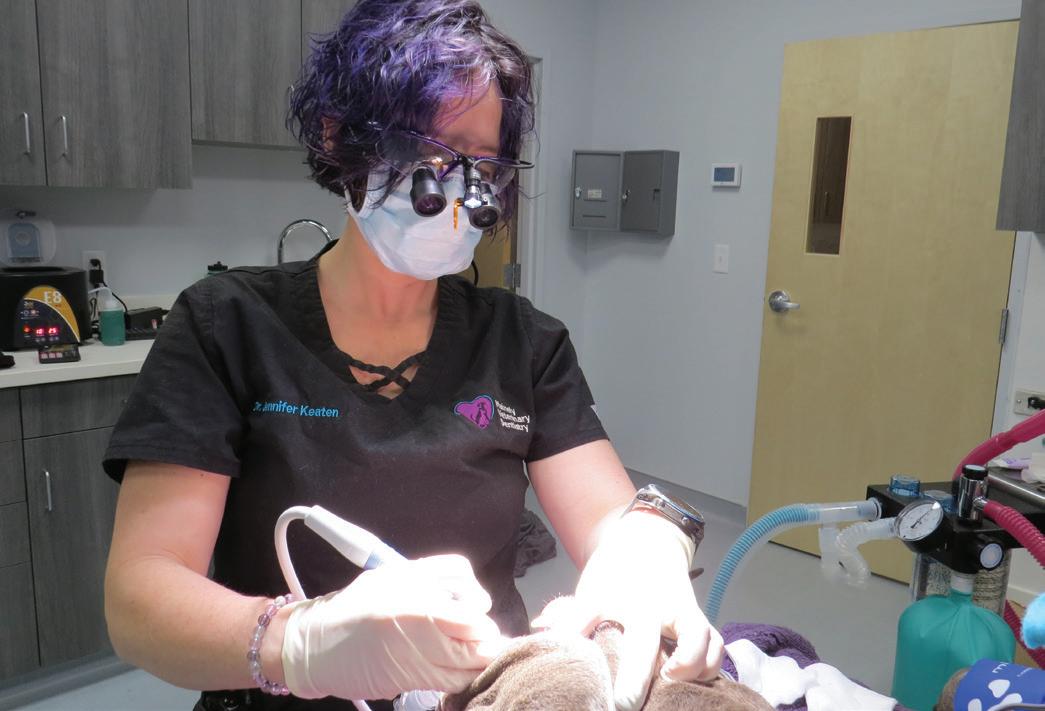






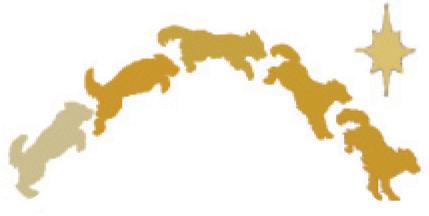












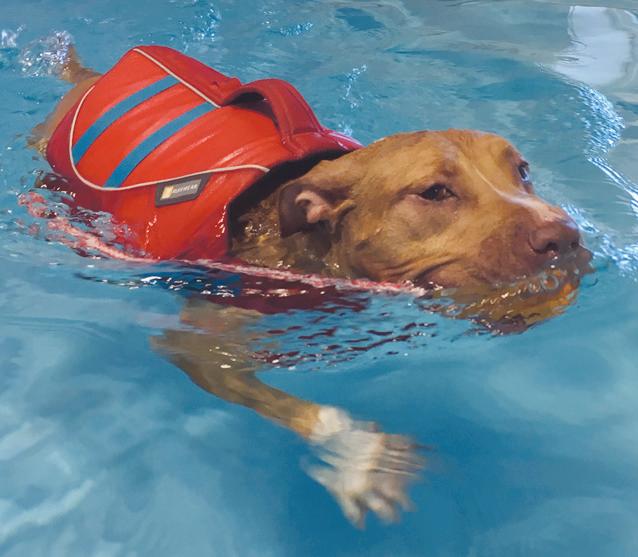

This is the first in a series of articles designed to assist pet care consumers with selecting an appropriate professional to care for and help them with their pets. In this article, I will answer the question, “What is a professional?” I will also discuss the importance of working under a Code of Technical and Ethical Standards developed by acknowledged experts in pet care.
Almost all professions follow the attributes listed under the heading “A Professional Will:”
Many different professionals work in pet care. They include Animal Breeders, Animal Control Officers, Animal Nutritionists, Animal Rescue/Shelter Workers, Boarding Kennel Operators and Staff, Daycare Operators and Staff, Dog Walkers, Groomers, Pet Photographers, Pet Sitters, Veterinarians and their staff, and undoubtedly some that I have missed. While the government regulates most professions at some level to protect the consumer, the veterinarian is the only one strictly regulated among pet care professions. The other pet care professions are, for the most part, unregulated or lightly regulated. As one working in several areas of pet care, I believe all pet care professionals must comply with these criteria if they are to call themselves professionals.
The most critical criterion on this list, and the most overlooked in the pet care professions, is the need to follow a code of technical and ethical standards established
by Don Hanson
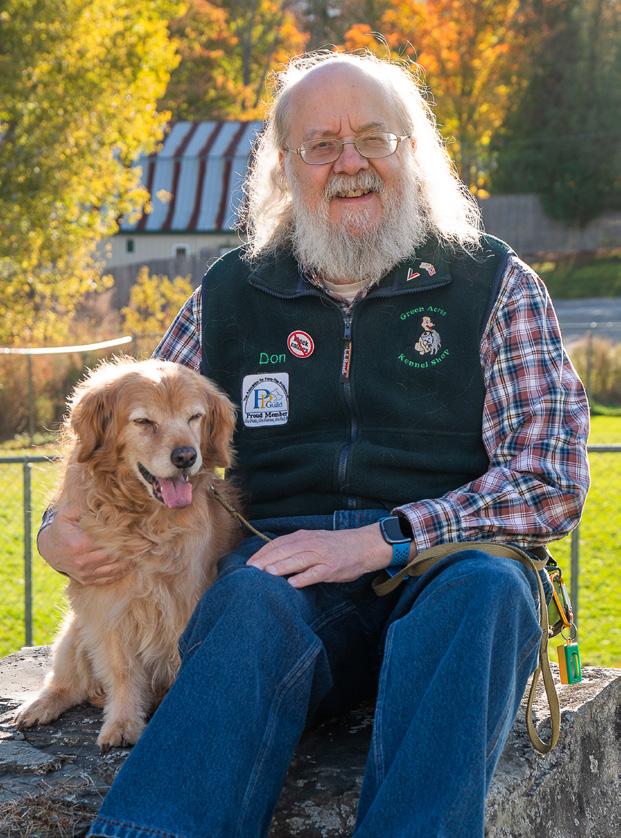
by experts in the field. Architects, Doctors, Engineers, Lawyers, Social Workers, and most professions have such standards. Why should the pet care professions be any different, especially since these standards exist?
There are three technical and ethical standards for pet care professionals in the USA;
• The Pet Professional Guild (PPG) Guiding Principles –The Pet Professional Guild

(PPG) was founded by pet care professional Niki Tudge in 2012 as a place where pet professionals committed to humane and progressive training methods could gather to support each other and provide an educational resource to the pet-owning public. From its founding, PPG members have followed PPG's Guiding Principles.
“Pet Professional Guild members understand ForceFree to mean that: No shock, No prong, No choke and No pain, No fear, No force are ever employed in the training,
behavior modification, care, or management of any pet.”
• The American Animal Hospital Association (AAHA) 2015 Canine and Feline Behavior Management Guidelines – The AAHA is an international association of more than 50,000 veterinary care providers. Established in 1933, it is well known for setting standards for veterinary practices and quality pet care. A task force was established to investigate the high number of pets presenting to veterinarians with behavioral problems and to recommend a standard for addressing behavior in dogs and cats. This report, issued in August 2015, suggests that a behavioral wellness assessment should be part of every pet’s visit to the vet.
• The American Veterinary Society of Animal Behavior (AVSAB)—Humane Dog Training Position Statement— AVSAB is a group of Veterinarians, Veterinary Technicians, and doctoratelevel Animal Behaviorists dedicated to improving the lives of animals and people through an understanding of animal behavior.
The best pet care professionals I would choose for my pets or recommend to others will be familiar with all three of these standards and likely have their own
See WORDS on page 15
Don Hanson lives in Bangor, Maine, where he isthe co-owner of the Green Acres Kennel Shop (greenacreskennel.com) and the founder of ForceFreePets.com, an online educational resource for people with dogs and cats. He is a Professional Canine Behavior Consultant (PCBC-A) accredited by the Pet Professional Accreditation Board (PPAB)and a Bach Foundation Registered Animal Practitioner (BFRAP). Don is a member of thePet Professional Guild (PPG), where he serves on the Board of Directors and Steering Committee and chairs the Advocacy Committee. He is also a founding director of Pet Advocacy International (PIAI). In addition, Don produces and co-hosts The Woof Meow Showpodcast,available at http://bit.ly/WfMwPodcasts/,the Apple Podcast app, and Don's blog: www.words-woofs-meows.com.The opinions in this post are those of Don Hanson.

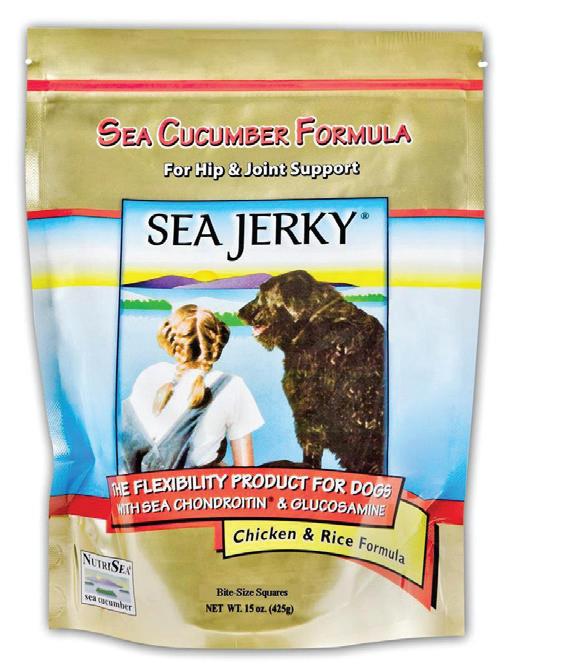

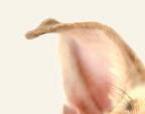




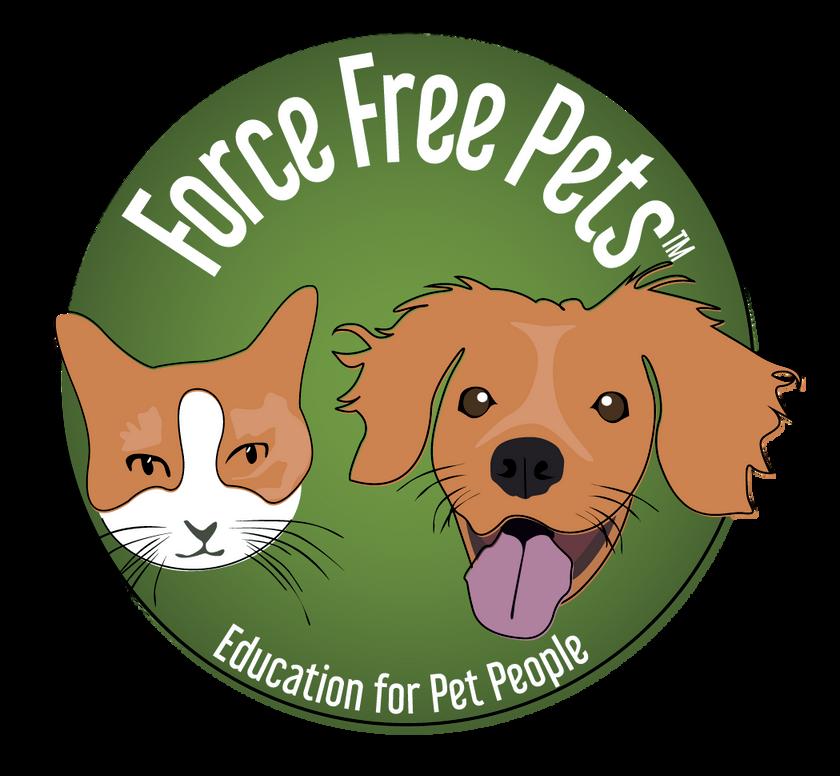










































By Susan Spisak
The no-kill, board governed nonprofit Bangor Humane Society, BHS, has been around since 1869. BHS serves over two hundred communities in northern and eastern Maine. They advocate for the humane treatment and adoption of companion animals, provide quality care for pets, and promote animal welfare through education and advocacy.
Kathryn Ravenscraft, their Director of Development and Communications, shared that BHS is among those nonprofits dealing with the after-effects of the pandemic’s uptick of adoptions. “Animal welfare across the country is experiencing a surge in dog surrenders and lower numbers of dog adoptions.” The many reasons for surrenders include the dogs’ lack of training and socialization, their separation anxiety (owners may not be working from
home anymore), and/or lack of owner resources.
She added that while these relinquished dogs are good, “quirky” pets, they simply require patience and dedication from potential adopters. Unfortunately, because of this, many dogs are with them longer than the average stay in prior years—including those who are mild-mannered.
Because of the remarkable increase in local surrenders, they’ve temporarily suspended transports in from southern partners in 2024. “Between 2021 and early 2024, local surrenders (not counting strays) increased by 38%. We have every intention of resuming transports this calendar year but are not yet sure which partners we'll reconnect with.”
Once they begin those transports, they’ll be ready. Several years ago, BHS renovated half of the medical and adoption facility, including one

Wonder is blind and enthusiastically
dog hoping he soon finds his forever people.
room that was scoured and revamped to become their much-needed quiet puppy quarantine room. Kathryn indicated it’s been a wonderful blessing, “Not only has it housed dogs from transports for their quarantine periods, but during times the room has been empty, it has served as a haven for sick dogs, pregnant or nursing mama dogs, or in one case, a dog that was simply too small to stay in a traditional kennel.”
In addition to educational outreach and other programs, to further give back to their communities, BHS boasts Operation: Pet Adoption and PALS: Pet Adoption for Loving Seniors. Vets and Seniors over sixty-five can adopt a dog, one year old and up at a 50% discounted rate. They understand the therapeutic benefits of having canine companions!
As far as volunteers are concerned, they’re always in need of fosters (most

Sailor is a miniature Australian Shepherd with a cleft palate that makes him the cutest thing on four legs. He has had a rough start and will need ample time to adjust to new surroundings. He is fearful of children, so a home with only adults would be best. He will need a vet relationship to help manage his anxiety, but once he's comfortable, he's a first-class snuggler.
especially for pregnant and nursing cats and for kittens). They’d appreciate on-site volunteer walkers to give their canines time out of their kennels, not to mention extra socialization and attention. Helper volunteers are deeply appreciated—folks willing to clean kennels, do dishes, fold laundry, and organize supply spaces.
Donations of all kinds are welcome— wet dog and cat food, high value dog treats, dog and cat toys, and cleaning supplies like bleach and paper towels.
“Due to the rising costs of literally everything, we are especially thankful for monetary donations that allow us to continue the standard of care we
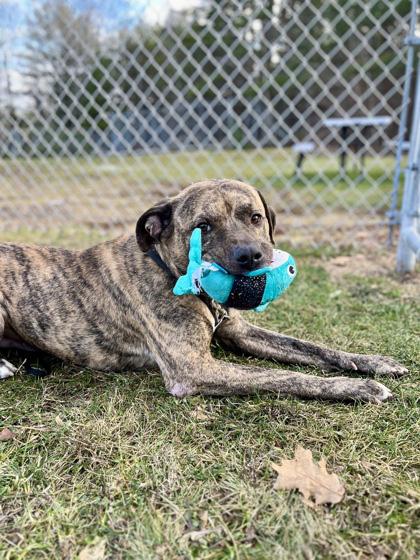
Asher arrived as a stray. As we have no history on his previous environment, we recommend using good judgment in introductions to other dogs, cats, or children. He can often be seen on walks with a toy in his mouth, which seems to help him feel secure. Cue the aaawww-factor. This is a very sweet boy who just needs a little time to feel comfortable.
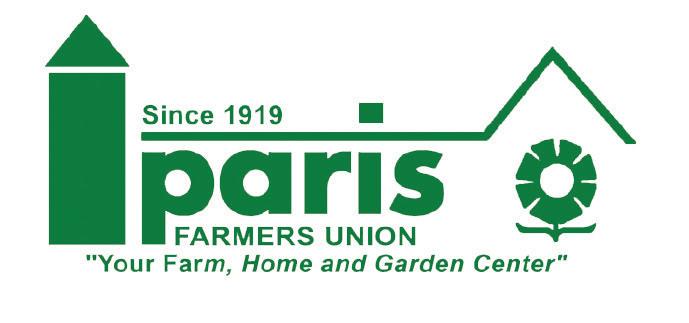

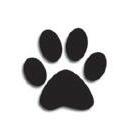











2.5 years old, Pit Bull
Summer arrived at Pope with 11 puppies! All the puppies have been adopted into loving homes and now it’s Summer’s turn. This gal has had enough of other animals and is looking for a home where she can take walks in the woods with her people and then relax by a cozy fire.
FMI visit: popehumane.org
do not

1.5 year old, Mixed Breed
Jerry is a favorite amongst Pope staff and volunteers. This big and goofy guy does not show well in his kennel but when you get him into a room or outside, he shows his true friendly and loving nature. If you’re looking for slobbery kisses and a ton of love, meet Jerry!

Sponsored by: Ashes to Ashes Pet Crematory 340 Howland Rd., LaGrange, (207)943-6474, ashestoashespetcrematory.com
1 year old, Mixed Breed
He is so sweet and loves ALL humans! He will collapse into his back expecting tummy rubs. He’s a good boy and loves to play ball. He has lots of puppy energy and absolutely loves being with his person. NO cats. He loves dogs but needs slow proper intro due to what we assume, was a bait dog past.
FMI visit: blessedbethebullies.com
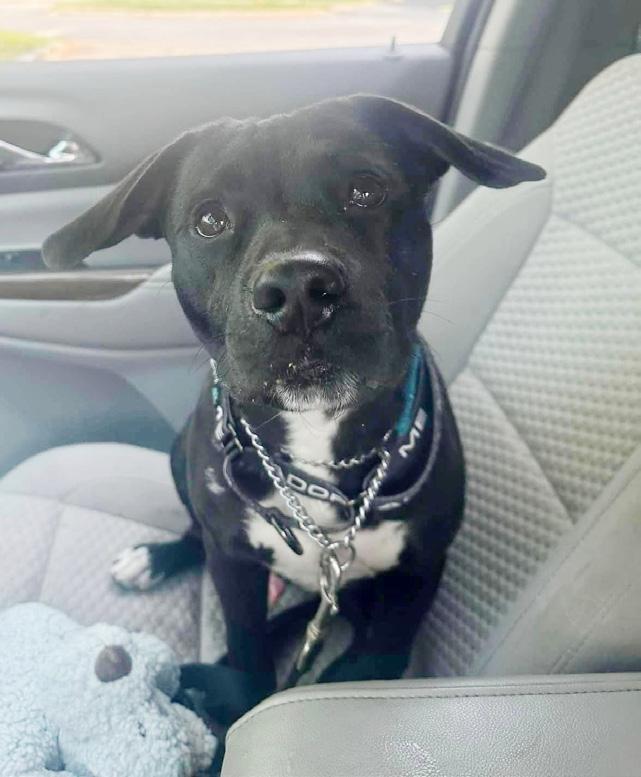
Sponsored by: Boothbay Canine Daycare & Boarding 653 Wiscasset Rd., Boothbay, boothbaycanine.com
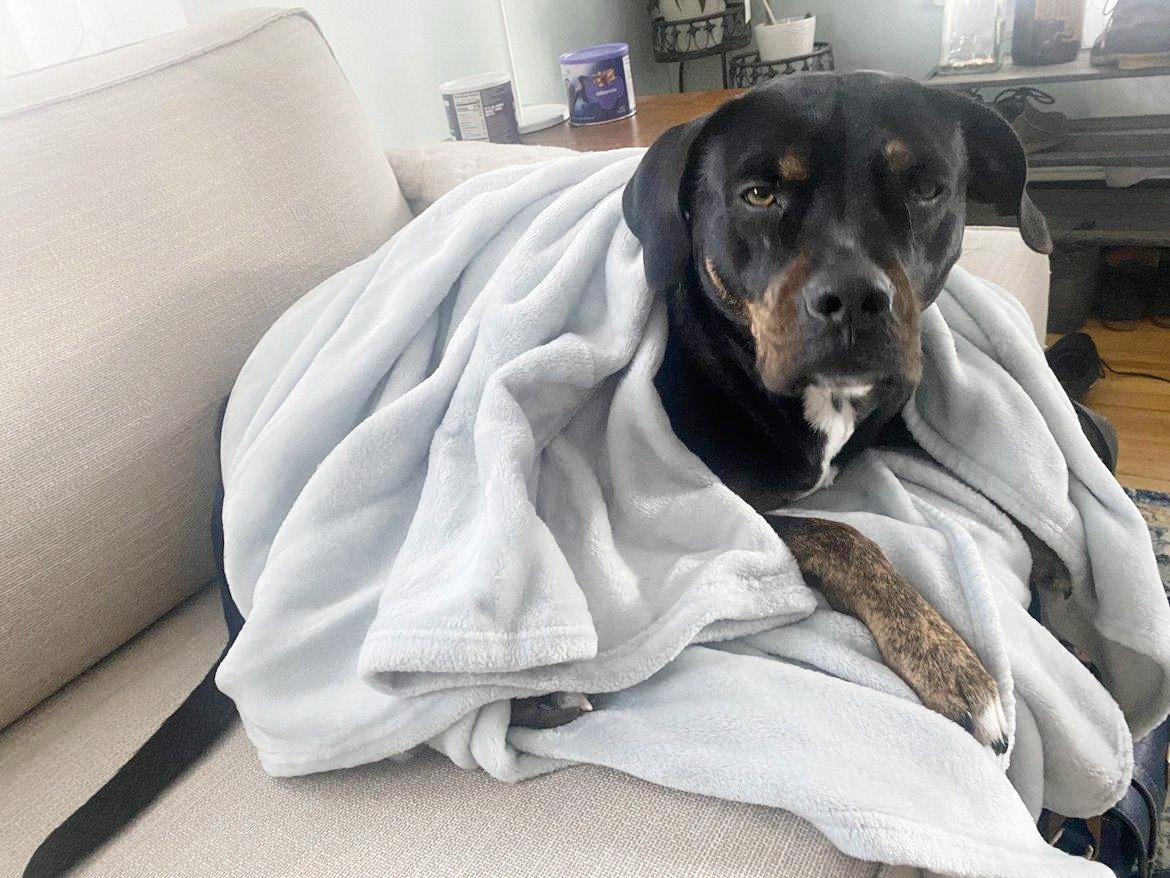
7 years old, Mixed Breed
Loui is a sweet dog that can’t wait to share his life with his new people! Described as a “professional snuggler” so he hopes his new home will have a nice big couch for some good cuddle sessions. He absolutely loves going for a walk! Goofy, affectionate and friendly dog that loves life with his people. No cats. FMI visit: animalwelfaresociety.org
JAZZY
2.5 years old, Lab Mix Jazzy is a lab mix with a ton of energy and a tail that never stops. This gal is looking for a family who is ready to play. If you’re looking for a dog to take on adventures, then Jazzy might be the perfect pup for you – we have a feeling she is going to love the water and maybe even be a boat dog!

Sponsored by: Boothbay Canine Daycare & Boarding 653 Wiscasset Rd., Boothbay, boothbaycanine.com

(207)230-8455, waterbarkwellness.com
1 year old, Mixed Breed I’m still waiting for my forever home, but I’m not complaining because I know the perfect family is out there somewhere! I’m a funloving 1-year-old who gets along with people and other dogs. NO CATS, sorry! I have a special talent for jolly ball playing and car rides. House and crate trained. : blessedbethebullies.com

Sponsored by: (207)729-4678, androscogginanimalhospital.com
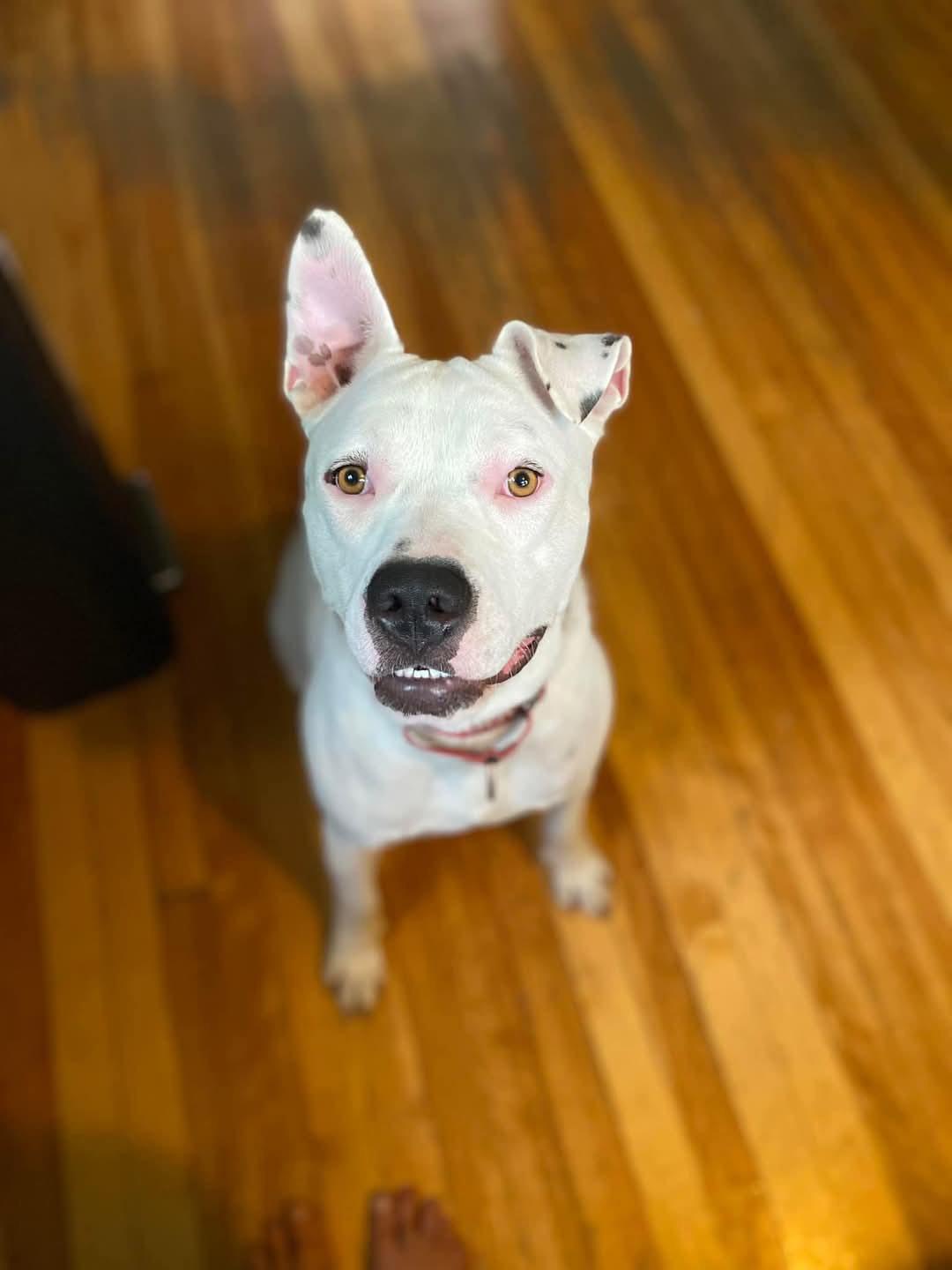
and a great family dog! No cats.

FMI visit: animalwelfaresociety.org
Sponsored by: York Bark & Play 915 US Route 1, York, (207)361-4758, yorkbarkandplay.com

Sponsored by: Ashes to Ashes Pet Crematory 340 Howland Rd., LaGrange, (207)943-6474, ashestoashespetcrematory.com
Sponsored by: Green Tree Coffee & Tea 2456 Atlantic Hwy., Lincolnville, (207)706-7908, greentreecoffee.com

Sponsored by: Bagel Café 30 Main St., Camden, (207)236-2661, bagelcafemaine.com



These events are currently scheduled as of our production date however please check with the event organizers to ensure they are still taking place on these dates.
TSC NAIL TRIM CLINIC
Saturday, February 1
Thomaston, 12PM – 3PM
Is your pet in need of a pedicure?
Bring them over to Tractor Supply in Thomaston and Shannon Nachajko, Director of Catahoula Rescue of New England will be on hand to make your fur kids look their very best! And remember we trim not only dogs, but cats, rabbits, guinea pigs, you name it! Nail Trimming and Ear Cleanings are available for a $10.00 each or combo price of $12.00 for ear cleanings. All funds raised go directly to rescue. Weather permitting - Call ahead in case of snow!
PET VALENTINE PHOTO BOOTH
Saturday, February 8

Scarborough, , 11AM – 2PM
Bring your dog for some cute pics at our sweet Valentine photo booth (donations appreciated). Learn more about our mission, volunteering, fostering or adopting. Buy some ODND merchandise while you’re there! PetQuarters 486 Payne Rd Scarborough, ME. FMI visit www. olddogsnewdigs.com/event/
WINTER OLYMPICS –ANNUAL GAMES
Saturday, February 15
Somerville, 10AM – 1PM On Track Agility Club of Maine, Winter Olympics – Annual Games. Compete with your dog in a variety of fun tasks! Accumulate points towards the Gold, Silver and Bronze medals. A favorite
workshop!! $85 Location: North Star Dog Training School, Somerville. Bad weather date Sunday, 2/16. FMI Call Kathy at (207)691-2332 or e-mail kduhnoski@myfairpoint.net
TSC NAIL TRIM CLINIC
Tuesday, February 18
Thomaston, 11AM – 1PM Is your pet in need of a pedicure? Bring them over to Tractor Supply in Thomaston and Shannon Nachajko, Director of Catahoula Rescue of New England will be on hand to make your fur kids look their very best! And remember we trim not only dogs, but cats, rabbits, guinea pigs, you name it! Nail Trimming and Ear Cleanings are
available for a $10.00 each or combo price of $12.00 for ear cleanings. All funds raised go directly to rescue. Weather permitting - Call ahead in case of snow!
RALLY WORKSHOP
Saturday, February 22
Somerville, 10AM – 1PM Rally Workshop – all levels. Learn how to perform the rally exercises correctly and avoid losing points unnecessarily. Start right and learn how to handle correctly – your dog will thank you! North Star workshop. $85 Location: North Star Dog Training School, Somerville. Bad weather date Sunday, 2/23. FMI Call Kathy at (207)691-2332 or e-mail kduhnoski@myfairpoint.net
TSC NAIL TRIM CLINIC
Sunday, February 23
Thomaston, 12PM – 2PM Is your pet in need of a pedicure? Bring them over to Tractor Supply in Thomaston and Shannon Nachajko, Director of Catahoula Rescue of New England will be on hand to make your fur kids look their very best! And remember we trim not only dogs, but cats, rabbits, guinea pigs, you name it! Nail Trimming and Ear Cleanings are available for a $10.00 each or combo price of $12.00 for ear cleanings. All funds raised go directly to rescue. Weather permitting - Call ahead in case of snow!
DO YOU HAVE AN UPCOMING EVENT?
Let us know about it! Send info to jenn@downeastdognews.com CALL AHEAD!
Event schedules are subject to change. Contact individual event organizers to confirm times and locations. Downeast Dog News is not responsible for changes or errors.
• Be supervised. Help out a bit if necessary, intervene, and exchange for something else if you need to abort the session
Examples:
• A cardboard box, closed, with kibble inside
• A cardboard box inside a larger cardboard box
• A bowl inside a bowl (inside a bowl), like stacking nested Russian dolls
• Wrapped inside a towel and hidden somewhere
• A metal bowl with large metal utensils inside
• Objects that are a bit too small for easy access to food
• Hidden somewhere in your house or yard so your pup has to engage the olfactory system
Material examples:
• Cardboard such as boxes, egg cartons, paper towel rolls
• Metal (not sharp, of course) such as baking sheets, metal bowls, cooking utensils
• Some plastics
• Wood What is the dog learning?
• Resilience. Some puzzles will be noisy or reflective or move

unpredictably.
• Focus/Sticktoitness. It may take a while to complete the puzzle.
• The unpredictable is predictable. That pan may move in an unanticipated way.
• Independent play. This is an activity that doesn’t include the human (unless you need to help a tiny bit).
• Frustration tolerance.
• The floor is an awesome place, full of fun games (e.g., games counteract counter surfing)
Kibble Scatter
A super simple, quick method to turn a boring mealtime into a treasure hunt is to do a kibble scatter. Whatever you might put in your dog’s dish you will scatter on the floor, taking care they don’t end up somewhere inaccessible to your dog. I love to assign kids the task of designing puzzles. It’s a wonderful way to get them involved!
I am collecting photos and videos of the creative puzzles people are coming up with. Please share yours with me! You can contact me through my website. I am eager to see what you have created!
Happy Training!

The Museum of Maritime Pets will present an exhibit from February 1March 2: All About Sled Dogs. A related talk by museum founder Pat Sullivan will take place at the Rockland Public Library on February 20 at 2 p.m.
The Museum is also planning its summer working water dog workshops, so please contact them if you own and work with the following breeds and would like to participate: Malamutes, Samoyeds, Siberian Huskies, Portuguese or Spanish Water Dogs, Irish Water Spaniels, Chesapeake Bay Retrievers. 207-390-5909 info@museumofmaritimepets.org
A small beachfront and tented area are available for participants and audiences.
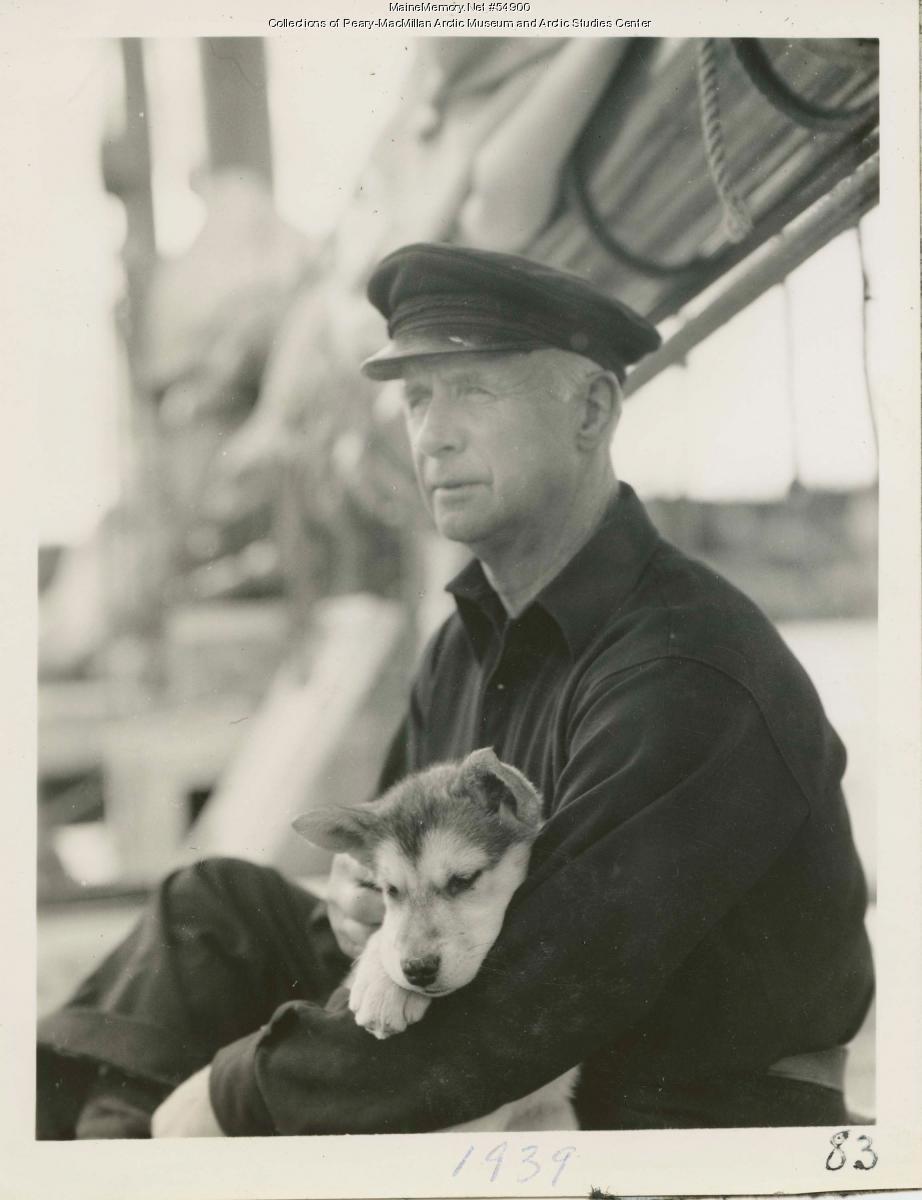
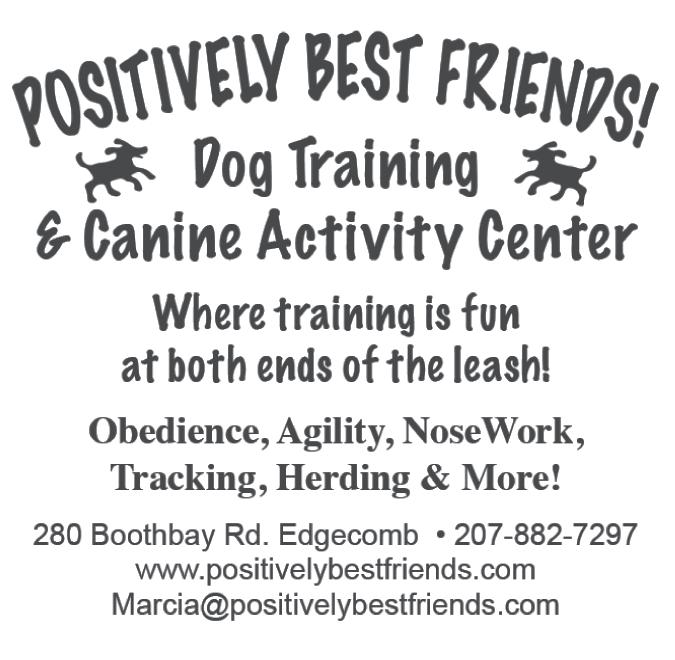



FREEPORT, MAINE
Certified Fear Free Professional Training www.wholedogcamp.com Fully-fenced drop-in and play!
Specialized Board and Daycare with Jenny Ruth Yasi CPDT-KA, CCUI, CTDI, FFCP(Trainer) 207-756-9421
HOT DOG from page 2

Based in Hollis Center, Maine, serves surrounding areas
Experienced pet care for all critters big and small Email: info@lovealittlepets.com Website: lovealittlepets.com
FMI – The Truth About Pet Food – Ending 2024 with the WORST Pet Food Regulatory Failure Open Sample vs Unopened Sample – The difference between the two are MASSIVE –https://truthaboutpetfood.com/ending-2024with-the-worst-pet-food-regulatory-failure/ FMI – PETS+ – Bird Flu and the Northwest Naturals Recall: Retailers Have Questions –https://petsplusmag.com/bird-flu-and-thenorthwest-naturals-recall-retailers-havequestions/
Don Hanson is the co-owner of the Green Acres Kennel Shop and the founder of ForceFreePets.com. See his column on page 11.

WORDS from page 11
ethics policies posted on their website, available in printed form, and included in or at least referenced in their contracts. If not, I encourage you to seek a new pet care professional. The Pet Professional Guild is a great place to start –https://www.petprofessionalguild.com/find-a-ppgprofessional/ Resources
• The American Animal Hospital Association (AAHA) 2015 Canine and Feline Behavior Management Guidelines – [https://www. aaha.org/aaha-guidelines/behaviormanagement/behavior-management-home/]. First published in….
• The Pet Professional Guild (PPG) Guiding Principles [https://www.petprofessional guild.com/join-ppg/principles-conduct/ guiding-principles/ ]
• The American VeterinarySociety of Animal Behavior (AVSAB) - Humane Dog Training Position Statement - https://avsab. org/wp-content/uploads/2021/08/AVSABHumane-Dog Training-PositionStatement-2021.pdf
• Pet Professional Guild – Find PPG Professional - https://www.petprofessional guild.com/find-a-ppg-professional/

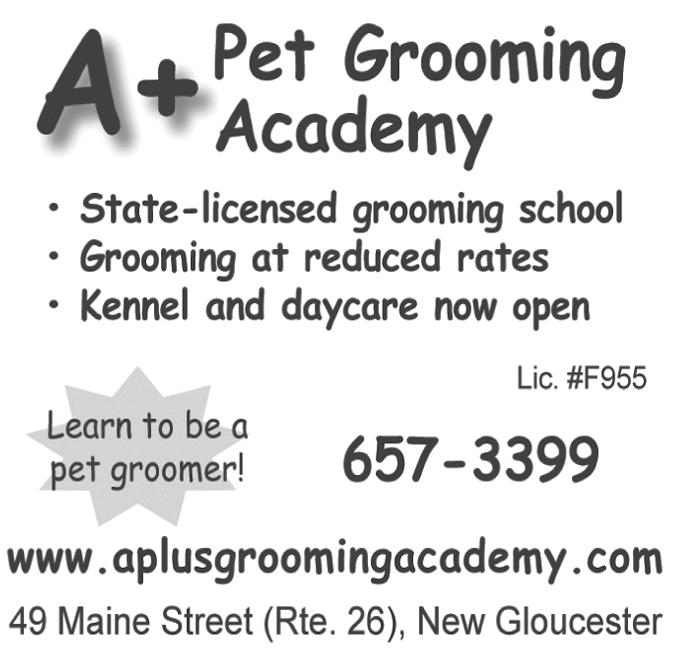


& Pets
Communicate with your pets, living or deceased with Sara Moore. Long distance sessions available!
www.enlightenedhorizons.com As heard on 94.9 and Magic 104.5
I will continue to feed my pets primarily frozen raw or freeze-dried pet food from several manufacturers, including Northwest Naturals. Northwest Naturals is one of the few pet food companies that makes its food in a USDA- approved facility. That means it must meet strict hygiene, quality control, and safety regulations for processing meat and other ingredients used in pet food. The USDA is also onsite daily on every shift and has offices in each NWN facility. That also means all the ingredients in the pet food it sells are fit for human consumption, a rarity in pet food manufacturing.
The Basic Principles of the Technical & Ethical Standards for the Pet Care Professions state:
• Animals are sentient beings and must always be treated with respect and compassion.
• Behavioral problems affect more dogs and cats than any other medical condition and are one of the most common causes of euthanasia, relinquishment, or abandonment of pets. Therefore, all pet care professionals MUST have a rudimentary understanding of animal behavior based on science to provide an acceptable, ethical, and humane standard of care.
• Aversive methods and tools used to manage and train animals are unnecessary and contrary to an animal's well-being and, therefore, must NEVER be used. Such tools and methods include alpha rolls, beating cattle prods, choke collars, dominance downs, electronic shock collars, entrapment, lunge whips, prong (pinch) collars, and starving or withholding food. If the tool or method uses force, is used to create anxiety or fear, or to cause physical, mental, or emotional pain, it is ABUSE and MUST NEVER be used.

WHAT from page 7
structures. A needle biopsy can often be safely performed under ultrasound guidance and with mild sedation. This is a valuable technique in assessing the presence of prostatic cancer. In patients with known or suspected cancer, advanced imaging with a CAT scan can be considered. What if my dog has prostate cancer?
As with most maladies, early discovery gives us the most options for extending a good quality of life. You can advocate for your pup by making sure he receives a thorough exam yearly. If he has recurrent “urinary tract infections,” the degree of suspicion for potential abscess or malignancy should spark an investigation. Are there any treatments for prostatic cancer?
Prostatic cancer is not yet curable in dogs as it may be in humans. However, many times it can be successfully managed for lengthy periods of time. Surgery, which is not uncommon in humans, is not typically utilized in dogs due to a high complication rate. Options include chemotherapy (which is well-tolerated in dogs) to reduce the size of the tumor and delay its progression. Newer, oral “targeted drugs” (as used in human medicine) are becoming more available in veterinary medicine and can offer significant benefits. Newer techniques such as “stereotactic radiation treatment “(SRT) can deliver radiation to very precise targets minimizing damage to adjacent tissues and avoiding systemic radiation effects. The future is bright!




